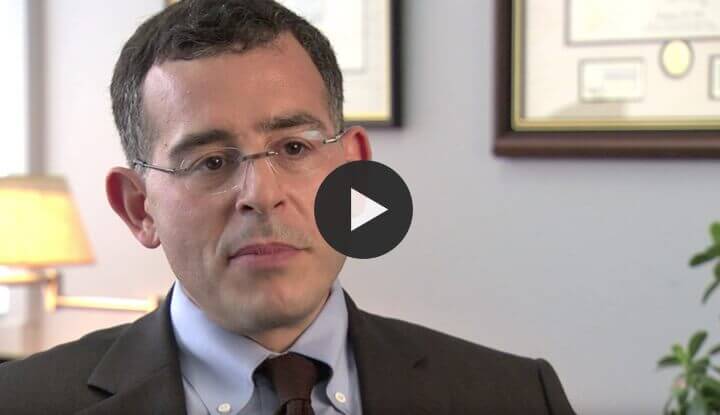Profiting From Pain
With the U.S. in the grips of an opioid crisis that has killed hundreds of thousands, the role of pharmaceutical manufacturers that made billions selling the deadly painkillers is coming into focus as litigation and investigations mount.

Big Pharma and the Opioid Crisis
Chapter Summary
The medical establishment completely changed its approach to opioid prescriptions about 20 years ago. The turnaround was orchestrated by drug makers that unleashed the opioid crisis that now grips the United States.
From as far back as 1911 until the late 1990s, the use of opioids, or narcotics, was limited to very narrow circumstances, such as post-surgical pain and end-of-life care. That’s because the medical establishment and regulators were keenly aware of the addictive quality of the drugs and the dangers they posed if misused.
But that all changed when a school of thought started to take over in medicine beginning in the late 1990s, early 2000s. Treating pain became a preeminent priority. Addiction was less of a concern. Pain was dubbed the “5th vital sign.”
Big Pharma played an important role in this transformation and made billions in the process. Now states, cities, counties and other jurisdictions across the country are fighting back with lawsuits and investigations, hoping to hold drugmakers accountable for the collateral damage of the nation’s opioid crisis.
The seeds of the epidemic were planted nearly two decades ago.
With little or no valid, clinical evidence to go on, the medical establishment began prescribing opioids for long-term, chronic pain.
Doctors’ and hospitals’ ratings were even tied to how well they reduced patients’ pain. The concept of “pseudo addiction” was created, encouraging doctors to treat patients with some signs of addiction by giving them even more opioids.
Potent narcotics started to flood the U.S. as sales skyrocketed. According to the Centers for Disease Control and Prevention, the amount of prescription opioids sold to pharmacies, hospitals and doctors’ offices almost quadrupled from 1999 to 2014 without any evidence of a change in Americans’ overall reported pain.
In 2012, the number of opioid prescriptions peaked at more than 255 million, or 81.3 prescriptions for every 100 people in the United States. According to government numbers, there are more than 650,000 opioid prescriptions dispensed every day in the U.S.
By 2014, the U.S., with about 5 percent of the global population, consumed about 80 percent of the opioid supply in the world, making it a $24 billion market.
The family that owns Purdue Pharma, the Sacklers, became one of the wealthiest families in the country, with a net worth that reached as high as $14 billion in 2015, largely on the strength of the opioid OxyContin’s profits. The family was ranked by Forbes to be among the top 20 richest in the U.S.
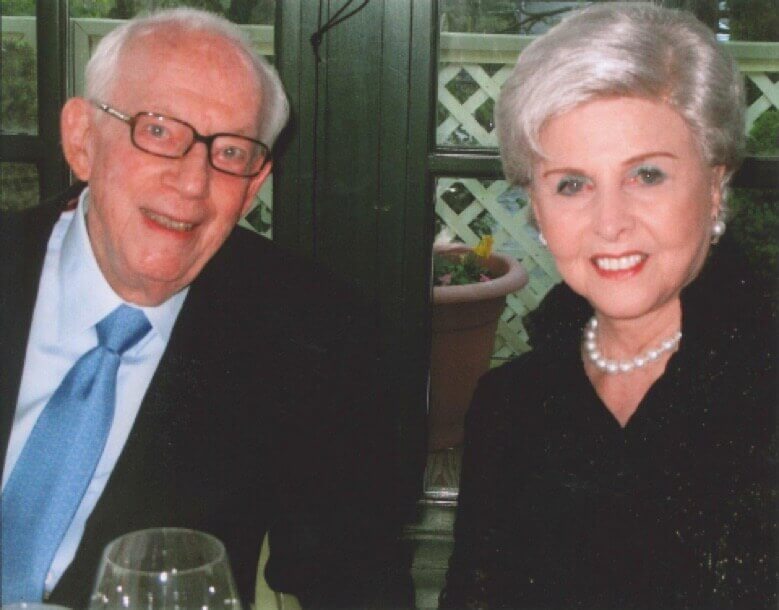
As the family and company’s fortunes rose, so too did the suffering across the country.
Overdoses and deaths spiked. As the CDC notes, deaths quadrupled. Every day, more than 1,000 people are treated in emergency rooms for misusing prescription opioids and an estimated 78 to 91 Americans die from prescription drug overdoses.
Between 1999 and 2015, approximately 183,000 Americans died from prescription opioid overdoses – 15,000 in 2015 alone.
As Dr. Don Teater, a medical advisor to the National Safety Council put it, “Painkillers don’t kill pain. They kill people.”

Multi-Faceted Campaign
Chapter Summary
Big pharma used a multi-level marketing campaign to educate doctors and send the message that opioids were the humane treatment for patients in pain. The message used bogus evidence to prop up the idea that addiction fears were overblown and withholding opioids was needlessly cruel.
According to Andrew Kolodny, who co-directs the Opioid Policy Research Collaborative at Brandeis University, the pharmaceutical industry is “almost entirely responsible” for the epidemic, but shares blame with the regulators at the U.S. Food and Drug Administration who failed to enforce the law as they should have.
Kolodny, who is executive director of Physicians for Responsible Opioid Prescribing, said the pharmaceutical industry funded a “multi-faceted campaign” that “changed the way the medical community thought about opioids and changed the culture of opioid prescribing in the United States in a way that would lead to a public health crisis.”

Adriane Fugh-Berman, professor of pharmacology and physiology at Georgetown University Medical Center, said the pharmaceutical industry created the crisis. “That’s been well documented by journalists, in legal documents,” she said. “It’s well documented what Purdue Pharma’s tactics have done.”
The campaign, Kolodny said, was a coordinated message sent through various channels to appear as if it wasn’t directly from drug manufacturers. If that had been apparent, he said, the medical community would have been more skeptical, “less gullible.”
Lunches, Conferences and Textbooks
One pain specialist, however, said that while the drug companies are “not innocent,” doctors bear more responsibility for failing to do their own research and not digging into the bogus information they were given.
Dr. Steven Barna, who practices in Tampa, Florida, said he was trained at Harvard “to give as much narcotics as possible” to alleviate pain. Barna remembers seeing the drug companies in action hosting lunch meetings and conferences. Drug companies sometimes even paid for textbooks, which was a lot of money for a young medical student.
Barna had his fellowship around 2001 and 2002, and remembers combing through thick patient charts, trying to determine which combinations of opioids they hadn’t yet received. That’s how he was trained — to administer various doses of different medications.
But when he became an attending physician responsible for his own patients, he saw that all those drugs over long periods of time weren’t helping them, and they had no quality of life.
So Barna dug deeper into the literature and realized there was no good evidence that opioids were effective at treating chronic, non-cancer pain. He decided to find non-narcotic alternatives to treat these patients.
‘Abuse-Deterrent’ Confusion
Doctors, he said, are educated and are supposed to be smart. “You should be able to look through this stuff and determine what’s right,” he said. “You can argue it’s the physicians’ fault for not being more critical about it.”
But health care professionals frequently don’t understand the dangers. According to one survey, for example, nearly half of internists, family physicians and general practitioners incorrectly thought that “abuse-deterrent” pills were less addictive than their standard counterparts. The pills may be harder to crush or manipulate, but they are just as addictive as traditional forms of opioids.
In that same survey, a third of health care providers wrongly said they believed that most prescription drug abuse is by means other than swallowing pills as intended. In fact, oral ingestion is the most common route by which opioids are abused.
In addition, a quarter of doctors responding to the survey said they were either slightly or not at all concerned about the potential for opioids to be diverted from legal use to the illicit market, even though this practice is common.
Messages from Different Directions
Kolodny and Fugh-Berman said the drug companies overwhelmed the medical establishment with the message from many different directions that appeared to be coming from peers and authority figures.
“It’s a multi-modal effort,” Fugh-Berman said. “It had catastrophic consequences and continues to have catastrophic consequences.”
The fact that the message came from various places is what made it work, Fugh-Berman said. “If it’s what your hear in a lot of different settings, it seems like a consensus,” she explained. “And that’s how industry controls medical discourse. You don’t have to get to everybody. You have to get to opinion leaders, who then affect the opinions of their peers…You have to get to their teachers.”
Opioid makers pumped money into professional societies and organizations, including the Joint Commission on the Accreditation of Healthcare Organizations and the Federation of State Medical Boards, as well as what Fugh-Berman described as “fake organizations” established for this purpose.
Certain doctors, who were dubbed “key opinion leaders,” were given funding to spread the message that opioids were an enlightened option for people in pain, and that those physicians who withheld them in the past were stingy and cruel.
“Many of the people involved in this campaign to increase prescribing did believe what they were saying,” Kolodny said. “But those who were getting paid well may have figured out much quicker that what they were saying wasn’t true if it wasn’t in their financial interest to keep doing this.”
Drug companies like Purdue Pharma, the maker of OxyContin, he said, “gave a megaphone to people who had these views.”

Key Opinion Leaders
Chapter Summary
Certain high-profile, influential doctors in the area of pain management received funding from pharmaceutical companies as they used flawed research to proselytize for drug makers. These doctors helped induce the medical community to accept the idea that opioid prescriptions should be freely dispensed to patients in pain.
An influential group of doctors led the movement to more aggressively treat pain, arguing the fear of addiction was overblown, and people were suffering because they were being denied medication.
In many instances, those influential doctors had financial relationships with large pharmaceutical companies. Drug manufacturers also groomed some speakers to spread their message.
For example, Purdue held more than 40 pain-management and speaker-training conferences at resorts in places like Boca Raton, Florida, and Scottsdale, Arizona, between 1996 and 2001.
More than 5,000 physicians, pharmacists, and nurses attended these seminars where they were recruited and trained for Purdue’s national speaker bureau. All their expenses were paid at the seminars. The trained speakers were made available to give presentations about opioids, including the active ingredient in OxyContin, oxycodone, to their colleagues at local medical conferences and in hospital presentations.
Porter Jick Letter
Many trace the seeds for the change in attitudes toward opioids back to a 1980 letter published in the New England Journal of Medicine by Dr. Hershel Jick of Boston University Medical Center and his assistant, Jane Porter. The letter was published 15 years before OxyContin was approved by the FDA.
The single-paragraph letter referred to Jick’s analysis of hospital files of patients’ given short-term, limited doses of opioids in a controlled setting to conclude that less than 1 percent of opioid users became addicted. The analyses did not address long-term opioid use outside of a hospital, and yet years after the letter was published, the statistic became a mantra that took hold with continual repetition by those who preached the benefits of opioids. It would be cited hundreds of times as proof that opioids were safe for people in pain.
Jick, who Kolodny said was not financed by drug companies, was horrified years later by how the letter had been misused.
Dr. Hershel Jick ‘Mortified’
“I’m essentially mortified that that letter to the editor was used as an excuse to do what these drug companies did,” he told the Associated Press last year. “They used this letter to spread the word that these drugs were not very addictive.”
The letter became the foundation for much of the faulty thinking that followed, paving the way for a massive expansion in opioid prescribing.
The bogus 1 percent statistic has been repeated for years in opioid drug-marketing campaigns, although it has no legitimate basis in science, particularly in relation to long-term treatment for chronic pain. And while there is no consensus regarding the actual prevalence of abuse or addiction, studies have suggested that as many as 40 percent of chronic pain patients treated in specialty or primary care outpatient centers meet the clinical criteria for opioid use disorder.
Russell Portenoy’s ‘Real Narrative’
One prominent key opinion leader was Dr. Russell Portenoy, who in 1986 coauthored a study that looked at just 38 patients and concluded that long-term use of opioids “can be a safe, salutary and more humane alternative to the options of surgery or not treatment in those patients with intractable non-malignant pain and no history of drug abuse.”
He appeared on ABC News’ Good Morning America in 2010 and said, “Addiction, when treating pain, is distinctly uncommon.”
Time magazine dubbed Portenoy “The King of Pain,” as he spread the gospel of opioid treatment, appearing in industry publications along the way. According to legal filings, Portenoy received research support, consulting fees, or honoraria from drug companies Purdue, Janssen, Endo and Cephalon, and was a paid consultant to Cephalon and Purdue.
Portenoy was director of the American Pain Foundation, which shuttered in 2012 as members of Congress asked questions following an investigation by ProPublica in the Washington Post into its close ties to pharmaceutical manufacturers. The investigation found that the foundation received 90 percent of its $5 million in funding from the drug and medical device industry in 2010.
In an interview in 2011, Portenoy expressed some misgivings about his role in the opioid crisis. He acknowledged he had used the Porter and Jick letter and other similar statements, “none of which represented real evidence… And yet, what I was trying to do was create a real narrative so that the primary care audience would look at this information in toto and feel more comfortable about opioids in a way they hadn’t before.”
In that 2011 interview, Portenoy told Physicians for Responsible Opioid Prescribing, “In essence, this was education to destigmatize, and because the primary goal was to destigmatize, we often left evidence behind…Clearly if I had an inkling of what I know now then, I wouldn’t have spoken in the way that I spoke. It was clearly the wrong thing to do.”
Suit: Cephalon Gave Doctor $2M
Another leader was Dr. Lynn Webster, co-founder of Lifetree Clinical research in Utah and a senior editor at the Pain Medicine Journal.
According to a lawsuit filed against pharmaceutical makers by the City of Chicago, Webster was the author of numerous continuing medical education programs sponsored by drug companies, receiving nearly $2 million in funding from Cephalon, the maker of the potent opioids Fentora and Actiq.
Webster also has served on the advisory board at Purdue Pharma. And between 2013 and 2015, Webster was the principal researcher on more than $9 million in contracts with pharmaceutical companies, including Pfizer, Mallinckrodt LLC, Bristol-Myers Squibb, Jazz Pharmaceuticals, and Orexo US, Inc., according to Stat News.
Dr. Lynn Webster’s Opioid Risk Tool
According to the government’s Open Payments database, Webster received more than $170,000 in general payments from drug and medical device companies in 2016. That included more than $44,000 from Teva Pharmaceuticals and nearly $10,000 from Pfizer. He also received more than $158,000 in associated research funding.
Webster created and promoted the Opioid Risk Tool, a tool that was supposed to help doctors screen their patients’ risk of becoming addicted. He also promoted the concept of pseudo-addiction in which some patients exhibiting certain signs of addiction should be treated with more pain medication.
After several of his patients died, the U.S. Drug Enforcement Administration searched Webster’s Utah clinic in 2010. Although he was reportedly investigated for several years, he never faced any charges.
In 2013 and 2014, Webster was president of the American Academy of Pain Medicine, which has come under fire for its financial ties to the pharmaceutical industry.
Doctor Later Calls Pseudo-Addiction an ‘Excuse’
Webster later acknowledged that pseudo-addiction “became an excuse sometimes to provide more medicine.” He also conceded that some of what he had participated in may not have been advisable.
“There certainly was a time we thought we could eliminate pain and provide people a quality of life by giving them whatever we needed to,” he told the Deseret News in June 2017. “And I think that we recognize that that’s not the case.”
But he added, “I think today there is an attack on people in pain… If they’re using an opioid, they’re stigmatized. If you’re prescribing an opioid, you are often accused of contributing to a huge social problem, and I don’t think that is fair.”
In March 2017, Webster produced a documentary shown on public television stations called The Painful Truth, depicting officials as having overreacted to the opioid epidemic and arguing that people in pain are being denied the medications they need.
When Stat News asked Webster why his financial ties to pharmaceutical companies weren’t disclosed to viewers of the documentary, Webster said people could research that online.
Dr. June Dahl Developed Pain Standards
Another key opinion leader was Dr. June Dahl, a professor of pharmacology at the University of Wisconsin-Madison, who helped influence the Joint Commission on Accreditation of Healthcare Organizations.
As Dahl told an oral history interviewer at the university, she had concluded around 1996 that physicians weren’t using pain medications appropriately, so she approached the commission about creating standards for pain management and using those standards to accredit health care facilities. After some work and persuasion, the commission approved the standards in 1999, using them to score facilities starting in January 2001.
In the continuing efforts, Dahl told the interviewer, she had received funding from various charitable foundations, including the Susan G. Komen Foundation. “We’ve also, we’re blessed that Purdue Pharma gave us a significant amount of money to keep things operational here,” she added.
The Milwaukee Journal Sentinel reported that the university’s Pain & Policy Studies Group received $2.5 million from Purdue and several other opioid makers between 1999 and 2010.

The 5th Vital Sign
Chapter Summary
Although pain is a subjective measure of a patient’s medical condition, opioid promoters advocated to designate it as the “5th vital sign.” This had the effect of forcing healthcare facilities and providers to elevate pain management in a way that encouraged over-prescribing of opioids.
Through these efforts, and others, patients’ pain became the “5th vital sign.” This concept was first adopted by the Veterans Health Administration in 1999, requiring health care professionals to ask patients to rate their pain on a scale of 10 in all clinical encounters. Pain management standards introduced by the joint commission in 2001 — while explicitly not adopting the 5th vital sign concept — helped the idea grow.
But designating pain as a vital sign and including its alleviation in ratings of medical professionals and facilities forced health care professionals to continuously ask patients to rate their pain and administer drugs to alleviate it. “Doctors and hospitals feel as if they’re being pressured by administrators to make sure their patients have pain relief so their hospitals get good ratings,” Fugh-Berman said. “When you’re being asked every few hours to focus on your pain, that’s really going to increase the use of painkillers.”
According to a recent government report, recently published research has shown that patients discharged from hospitals with new opioid prescriptions are more likely to report their pain was well managed “suggesting that savvy providers have figured out that opioids are a way to manipulate satisfaction.”
‘Pain is Subjective’
“The real problem with the fifth vital sign and the joint commission standards is it led to very aggressive use of opioids in the hospital setting,” Kolodny said. “Pain is subjective. It’s a symptom…Vital signs are objective measures critical to life – breathing rate, temperature, pulse, blood pressure.”
Pain was being addressed with drugs, but not necessarily the underlying cause, and with less regard for the quality of the patient’s life and ability to function.
To give an example of how elevating pain treatment can harm patients, Dr. Thomas D. Guastavino wrote on KevinMD.com about his first experience with the new paradigm.
’10 out of 10′
As he relates it, a floor nurse called him about a patient who had had an ankle operation and whose pain was not being controlled by the medication that had been ordered. Guastavino said he asked his usual questions about the procedure, the drugs that had been ordered, allergies, symptoms and whether the patient had a splint with tight bandages.
“More often than not in the past, this simple inquiry revealed that there was an identifiable, correctable reason for the patient’s pain and the proper course of action would be to correct the problem — in this case to loosen the tight bandages,” Guastavino wrote. “Just changing the pain medication was the last thing I did and for years it worked well, but this time it was different.”
The nurse emphasized that the patient described the pain as a “10 out of 10.” Guastavino said the bandages needed to be loosened, and if that didn’t work, to call back. The nurse hung up. Guastavino learned later that rather than loosen the bandages, the nurse had called her supervisor, who called another doctor who ordered stronger pain medication. The next day, the surgeon saw that the patient’s leg was “grossly swollen, dusky and almost developing a compartment syndrome, a very dangerous condition where the patient could have lost their leg.”
The surgeon, Gusatavino wrote, “told me that they were following new guidelines which included ‘the pain scales’ and now labeling pain as a ‘fifth vital sign.’”

Oversight and Advocacy Groups
Chapter Summary
Even organizations that accredit healthcare facilities and create policy on physician discipline and licensing received money from opioid manufacturers. These organizations are under fire now for playing a role in encouraging the over-prescribing of opioids.
The Joint Commission on the Accreditation of Healthcare Organizations and the Federation of State Medical Boards and have been criticized for enacting policies that encouraged over-prescribing of opioids while receiving funding from opioid manufacturers.
The state medical boards organization, for example, updated its model policy for controlled substance prescribing in 2004 and commissioned a book, Responsible Opioid Prescribing: A Physician’s Guide. The book — written by a doctor with financial ties to opioid manufacturers and funded by pharmaceutical companies, including Purdue — was distributed to state medical boards, as well as other health care organizations and doctors.
OxyContin Promotion Concern
According to letters written by U.S. Sen. Claire McCaskill, the Federation of State Medical Boards promoted a policy calling for punishment of physicians for under-treatment of pain, while assuring doctors they would not face disciplinary action for over prescribing narcotics. The book funded by Purdue resulted in $280,000 going to the federation.
According to the Government Accountability Office, Purdue had an arrangement with the joint commission in which it was one of only two companies that funded the commission’s pain-management educational programs and was the only drug company allowed to distribute certain educational materials and a book about pain management. This arrangement, the GAO said, “may have facilitated (Purdue’s) access to hospitals to promote OxyContin.”
Purdue’s Programs for hospital physicians, staff
During 2001 and 2002, according to the GAO, Purdue funded a series of nine programs nationwide to teach hospital physicians and staff on how to comply with joint commission’s pain standards for hospitals and to discuss postoperative pain treatment.
In addition, several other groups and organizations have been cited for their financial relationships with Pharma, many under the umbrella of the Pain Care Forum.
McCaskill wrote that Johnson & Johnson subsidiary Janssen partnered with groups like the American Geriatrics Society and the American Academy of Pain Medicine to create a guide that said, “Many studies show that opioids are rarely addictive when used properly for the management of chronic pain.”
Pain Care Forum
Lawsuits allege that pharmaceutical manufacturers worked through a group called the Pain Care Forum to promote opioids. Co-founded by Purdue Pharma’s Washington lobbyist, the forum consisted of manufacturer representatives, doctors and professional organizations that received substantial funding from drugmakers, including:
- The American Academy of Pain Management
- The American Pain Society
- The American Society of Pain Educators
According to an investigation by the Center for Public Integrity, members of the Pain Care Forum saturated Washington for more than a decade with messages extolling the benefits of prescription painkillers and pushing legislation while also working to blunt regulation. In the process, they employed another questionable statistic that took hold — that more than 100 million Americans suffered from chronic pain.
Want to find out how you can help fight the opioid crisis? Learn about proposed legislation and contact your representatives.

How You Can Help Fight the Opioid Crisis
As the United States grapples with the opioid crisis, many are looking for ways to fix it.
Responses range from criminal investigations to expansion of available treatment for opioid addicts. They include a presidential commission and emergency declaration, requests for funding and possible legislation.
Lawsuits have been filed by states, counties and cities against opioid makers, seeking to force the companies to help shoulder the financial costs of the crisis and hold them otherwise accountable.
Here are some other efforts underway and options to get involved.
Big Pharma Investigation
One U.S. senator, Claire McCaskill, a Missouri Democrat, has launched her own investigation into the role of the opioid industry in creating the crisis. As the ranking minority member of the Homeland Security and Governmental Affairs Committee, McCaskill is going it alone.
There are many proposals and initiatives directed at providing much-needed treatment for addicts. And there are efforts to encourage the development and approval of non-opioid pain relieving treatments.
There are also efforts to push regulators at the U.S. Food & Drug Administration to factor the societal impacts of approved drugs, beyond their impact on individual patients — something the FDA recently committed to doing.
Petition the FDA
Physicians for Responsible Opioid Prescribing (PROP), for example, has aligned with the Association of State and Territorial Health Officers, the National Safety Council and others to petition the FDA to remove from the market ultra-high dosage-unit opioids (UHDU).
Although the drugs are justified as necessary to treat patients who have developed tolerance to other opioid pain relievers, advocates argue that those patients can simply take more pills of lower-dosage opioids. The highly potent drugs, they maintain, are too dangerous to be sold.
According to the petition, drug overdose is now the leading cause of unintentional injury deaths in the United States, and most of these deaths involve an opioid.
“A friend or family member lacking a tolerance to opioids who borrows a single dose of an UHDU opioid for pain relief could experience life-threatening respiratory depression,” the petition states. “An overdose could also occur in the opioid-tolerant patient who accidentally takes just one extra dose or who intentionally takes an extra dose for unrelieved pain.”
The drugs pose a risk to very young children, according to the petition, that noted 51 toddlers died of opioid poisoning in 2015; in 2014, 14 toddlers died of opioid poisoning.
“High dose opioids are associated with increased risk for motor vehicle accidents, fractures from falls, immune suppression, and opioid associated androgen deficiency which can cause reduced libido, erectile dysfunction, fatigue, depression, decreased muscle mass, weight gain, osteoporosis and infertility,” the petition says. “One of the most serious adverse events associated with high dosages is development of an opioid use disorder. A person taking a relatively low dose of prescribed opioids is 15 times as likely to develop an opioid use disorder (OUD) as a person who has not been prescribed opioids. The risk continues to rise as doses increase; at high doses (≥ 120 mg MED) of opioids, the person’s risk of developing OUD is 122 times that of a person who has not been prescribed opioids.”
Upgrading DEA Authority
On another front, some members of Congress are advocating legislation that would undo a law that a joint Washington Post-60 Minutes investigation found was the result of drug-industry efforts to weaken law enforcement’s ability to take action.
According to the Post, the 2016 law now under fire removed a U.S. Drug Enforcement Administration a enforcement weapon, undermining its ability to reduce the flow of pain pills. Birthed by lobbyists and other industry allies, and fueled by campaign contributions, the controversial law — the Ensuring Patient Access and Effective Drug Enforcement Act of 2016 — hobbled the DEA’s ability to freeze suspicious narcotic shipments from manufacturers.
According to sponsor U.S. Rep. Gerry Connolly, a Virginia Democrat, the proposed legislation would help restore the Justice Department’s ability to respond to the opioid crisis.
Before the 2016 law was enacted, the DEA could suspend a pharmaceutical distributor’s license if the Attorney General found an imminent danger to public health and safety. The law made it more difficult for the DEA to act by redefining imminent danger to require “a substantial likelihood of an immediate threat that death, serious bodily harm or abuse of a controlled substance will occur in the absence of an immediate suspension of the registration.”
The proposed legislation —HR 4073, the Opioid Immediate Suspension Order Act — rescinds that definition of imminent danger and provides the DEA additional authority to suspend distributors’ licenses.
If you think regulators need to take stronger action, you can contact the Food and Drug Administration’s Center for Drug Evaluation and Research and let them know what you think.
Suggested comment:
My name is ______ and I live at _____. I am concerned about the role that drug makers played in creating the current opioid crisis that has killed tens of thousands of people and shattered so many lives. I want to encourage the FDA to take strong action to prevent this from happening again and to ensure that drug companies do not use money to influence decisions that endanger the public in the name of profit. I demand that the FDA instigate a thorough investigation of how we got to this crisis and how the agency can protect the American people without conflicts of interest.
Forum Briefed Officials
The Pain Care Forum, according to the center’s investigation, gave more than $140 million to political campaigns, dwarfing the $4 million spent by groups that advocated restricting painkillers.
According to the investigation, in 2006, the Pain Care Forum “organized a Capitol Hill briefing headlined ‘The Epidemic of Pain in America.’ Briefing materials included statements like: ‘Appropriate use of opioid medications like oxycodone is safe and effective and unlikely to cause addiction in people who are under the care of a doctor and who have no history of substance abuse.’”
Pain Legislation Pushed
The forum pushed for legislation requiring the Institute of Medicine to develop a comprehensive report on pain in America. Parts of the legislation were ultimately included in the Affordable Care Act.
The since-closed American Pain Foundation received $150,000 from Purdue to promote the findings of the Institute of Medicine’s pain report through the Pain Care Forum.
According to the Government Accountability Office, Purdue provided funding for website development and support for groups such as the American Chronic Pain Association and the American Academy of Pain Medicine.

Pharma Provides Doctor Education
Chapter Summary
Doctors are required to continue their medical education to maintain their licenses. This provided another opportunity for pharmaceutical companies to promote opioid prescribing by funding pain management courses that encouraged more liberal use of the drugs.
In order to maintain their medical licenses, doctors are required by many states to participate in what’s called continuing medical education (CME). However, questions have been raised about pharmaceutical and medical device makers’ funding thousands of these CME courses and having financial relationships with people who teach and speak during the programs.
The Government Accountability Office said in a 2003 report that Purdue Pharma financed more than 20,000 pain-related medical education programs through direct sponsorship or financial grants between 1996, when OxyContin was introduced, and July 2002. This included grants to support programs to help doctors earn required continuing medical education credits.
GAO: Purdue Funded Pain Programs
The GAO also found that in 2001 and 2002, Purdue funded nine programs around the country to educate hospital physicians and staff on how to comply with the joint commission’s pain standards and to discuss postoperative pain treatment.
To give another example, according to court documents and the investigation by the Journal Sentinel, the University of Wisconsin School of Medicine and Public Health offered a continuing medical education course online based on the opioid prescribing guide from the Federation of State Medical Boards. That course was funded by a $119,000 grant from Endo Pharmaceuticals, the maker of Opana ER, an opioid painkiller. The course also employed a reviewer who had received money from Cephalon to help with an application to the FDA for a drug approval.
Suit: General Practitioners Targeted
One lawsuit alleges that pharmaceutical companies targeted general practitioners, who are more reliant on this kind of advice because they don’t have specialized knowledge of pain treatment and medications. The manufacturers, it says, organized continuing education courses for general practitioners “on prescribing opioids to chronic pain patients, but provided no guidance on recognizing opioid abuse or weaning patients off opioids. “

Lawsuits: The Next Big Tobacco
Chapter Summary
Left to deal with the financial and human costs of the opioid epidemic, some states, cities and other communities are fighting back in court. Scores of lawsuits have been filed against opioid manufacturers and distributors seeking to hold them accountable and force them to pay.
A growing number of cities, counties and states say the pharmaceutical industry is largely to blame for the crisis that has devastated their citizens.
Some of the tactics of pharmaceutical companies have been likened to the methods tobacco companies used to stave off evidence that smoking was dangerous. And now, lawyers hope to emulate the legal effort against big tobacco that ended in a record $206 billion legal settlement in 1998 between 46 states and the major cigarette companies.
In fact, some of the same lawyers involved in the tobacco litigation are filing lawsuits against manufacturers of opioid drugs. One of those lawyers is Mike Moore, a former attorney general for Mississippi, who led the tobacco lawsuit, and is now serving as outside counsel for lawsuits filed by Mississippi and Ohio.
According to Hartfordbusiness.com, Moore said pharmaceutical companies used “an advertising and marketing scheme” that included telling doctors and patients their opioid-based drugs had a 1 percent chance of addiction if taken under a physician’s care.
“No studies or evidence support that,” Moore said, according to the news site. “They even put together industry-sponsored groups that promote the safety of opioid use, just like the tobacco companies did with the Tobacco Institute back in the day.”
He said like the tobacco case, the opioid lawsuits seek recovery for state spending of Medicaid dollars on the addiction crisis and funds for education and recovery campaigns.
Joe Rice, another lawyer involved in the tobacco settlement, is representing South Carolina in its case against opioid makers. And a third lawyer who was part of that case against tobacco, Steve Berman, has filed lawsuits on behalf of a group of counties in California.
Dealing with Toxic Results
In a blog post explaining a lawsuit he filed against drug makers, Berman wrote that the world’s largest narcotics manufacturers “began a campaign to stack the deck in favor of wider use of opioids. One tactic was to tout the broader use of opioids to physicians by finding — and hiring — other physicians to write papers and speak at events.
“At the same time, the drug companies mounted a campaign encouraging patients, including the elderly, to ask their doctors for the painkillers to treat common conditions such as back pain, arthritis and headaches.”
“The results are toxic.”
Altogether, more than a hundred lawsuits have been filed by states and communities and other entities across the country against pharmaceutical companies. The lawsuits:
- Accuse the industry of orchestrating the epidemic, putting profits ahead of safety through manipulation and outright deceit.
- Seek to hold the drug manufacturers liable for the costs of the opioid epidemic, trying to force the industry to help shoulder the financial burden of what has happened.
“With virtually no help from our federal government and little from our state … cities like ours are now frantically searching for answers for our own population,” Delray Beach Mayor Cary Glickstein said, according to the Palm Beach Post. “We’re right for turning our eyes to those who are known conspirators in this ongoing atrocity.”
Federal Cases Consolidated
On December 5, 2017, the federal Judicial Panel on Multidistrict Litigation granted a motion by lawyers representing states and municipalities in 46 lawsuits. The court agreed to assign all the federal opioid lawuits to a judge in the Northern District of Ohio to manage.
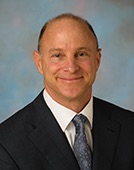
The Multidistrict Litigation, or MDL, included 64 lawsuits, according to the court order, which said attorneys had notified the panel of another 115 potentially related actions.
Multidistrict litigation is a means for federal courts to manage large numbers of similar lawsuits. The judge presiding over an MDL makes all decisions in the cases relating to things such as what kinds of information the parties must share, known as discovery, what experts may testify and what evidence will be deemed admissible in trial.
Typically, a handful of lawsuits will be selected to serve as bellwethers, which will go to trial first and help the parties in the remaining cases decide whether and how to settle their cases.
Settlement Talks Start
Bloomberg reported in late November that Purdue Pharma had started negotiations with state attorneys general over lawsuits against the company over its involvement in the opioid crisis.
The news service reported before that attorneys for Purdue had floated proposals for a global settlement of all opioid claims against Purdue and other pharmaceutical manufacturers.
Black Market Ties Alleged
The lawsuits against opioid manufacturers and distributors generally accuse pharmaceutical companies of an orchestrated marketing campaign that, as one put it, “rationalized prescribing opioids for chronic pain and opened the floodgates of opioid use and abuse.”
At least one of the lawsuits, filed by the city of Everett, Washington, takes a little different approach. That suit argues that Perdue Pharma knowingly or recklessly allowed OxyContin to be funneled into the black market, including to drug rings, pill mills and other dealers in Everett.
‘False OxyContin’ orders
The lawsuit describes a Los Angeles drug ring that in 2008 “engaged in a pattern of transparently false OxyContin orders, for the purpose of distributing OxyContin on the black market.” The suit says the company knew this and disregarded the fact that the orders made by the drug ring weren’t legitimate. Purdue “took no action and instead continued to supply massive and disturbing quantities of OxyContin pills to the drug ring until it was ultimately shut down by law enforcement.” The drug ring and its connection to Everett were detailed in a Los Angeles Times investigation of Purdue Pharma.
Purdue: Cops Knew
In a motion to dismiss the Everett lawsuit, Purdue argues that it had no legal duty to the city of Everett, and that law enforcement was well aware of and investigating the drug ring and drug dealers involved. Purdue further maintains that anything that happened in Everett is far removed from the drugmaker’s alleged failure to report suspicious orders in Los Angeles.
Motion: Distributor Contacted DEA
In its motion, Purdue notes, among other things, that court filings in the prosecution of the drug ring show that in October 2009, the OxyContin distributor, contacted the Drug Enforcement Administration to report concerns about the clinic and was asked by federal investigators not to alter its supply of OxyContin to the pharmacy filling clinic prescriptions so as not to interfere with the ongoing investigation.
In addition to drug manufacturers, many of the lawsuits name drug distributors, like McKesson as defendants. Some lawsuits, like one filed by Huntington, West Virginia, are solely against pharmaceutical distributors. In response to the crisis, CVS recently announced it was limiting most pain medication prescriptions to seven days for certain conditions.
Class action targets health care nonprofit
With most of the lawsuit firepower directed at pharmaceutical manufacturers and distributors, a group of local officials in West Virginia are aiming at another target: The Joint Commission that accredits health care facilities.
Stat News reported that the cities and towns of Huntington, Charleston, Kenova and Ceredo filed a class-action lawsuit against the nonprofit commission accusing it of spreading misinformation about the risks of opioid addiction in an alliance with Purdue Pharma and other opioid manufacturers.
The lawsuit cites the commissions’ Pain Management Standards and other related documents that it says “grossly misrepresented the addictive qualities of opioids and fostered dangerous pain control practices, the result of which was often the inappropriate provision of opioids with disastrous adverse consequences for individuals, families and communities. These dangerous Standards, with minor modifications, exist to this day.”
The lawsuit says the commission zealously enforced the standards even as the opioid crisis exploded and as the organization faced vocal criticism.
In July 2017, the commission agreed to change the standards, effective Jan. 1, 2018, the lawsuit says, hitting the JCAHO for showing “no urgency” in the face of a national emergency. The lawsuit also alleges that the pending change is inadequate.
Senator: ‘I’ve seen people die of overdoses’
New lawsuits are filed on a seemingly daily basis. Local governments, like Jacksonville, Florida, have asked attorneys to explore legal options.
Hawaii Sen. Josh Green, an emergency room doctor, has urged that state’s attorney general to file suit against the drug manufacturers.
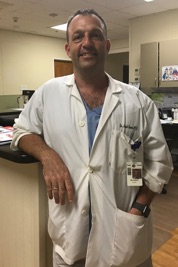
“I just felt that, based on what I’ve personally seen as a physician and chair of the human services committee in the Senate, we need to take action,” Green told Drugwatch. “No doubt damage has been done.”
Green said opioids were “promoted as a panacea in a very excessive, heavy-handed way by the pharmaceutical industry.”
And the consequences have been felt in emergency rooms. “I’ve seen people die of overdoses,” Green said. “I’ve seen a lot of people overdose when they never even had a prescription.”
As Green sees it, prescription opioids are so ubiquitous, it’s not surprising that a young person finds them on a shelf at home and takes them. “It’s a societal-wide problem,” he said.
He said he hopes a lawsuit brings awareness of the scope of the crisis and that any money the state wins be used for drug and alcohol treatment.
A lawsuit, he said “has to happen.” Drug companies “capitalized to the tune of billions of dollars while states around the country were facing a surge in addictions.”

Industry Practices Investigated
Chapter Summary
Drug companies have already paid hundreds of millions as a result of early lawsuit settlements, as well as settlements with the Justice Department. Some drug executives and employees are being prosecuted for illegally promoting opioids. And investigations have been launched on several fronts, including a collaboration of states attorneys general.
In addition to the lawsuits, investigations have been launched on a number of fronts. In many cases, pharmaceutical companies, their officials and employees are facing criminal charges.
The founder, as well as the former chief executive officer and five other former executives of Insys Therapeutics have been indicted on federal charges they conspired to bribe doctors to prescribe a fentanyl spray, Subsys, which is 50 times more powerful than heroin.
Was Subsys Illegally Marketed?
One former employee, Elizabeth Gurrieri, a former manager of reimbursements for the company, pleaded guilty in June 2017 to conspiring to defraud insurers into paying for the drug. Gurrieri agreed as part of her plea to cooperate with authorities in their investigation.
Federal and state investigations are focusing on whether Subsys, which was approved only for breakthrough cancer pain, was marketed for other purposes.
Oregon, Illinois, Massachusetts and New Hampshire have settled lawsuits against the Arizona-based company over the sales and marketing of the drug. The company’s settlements include:
- $4.5 million to Illinois in August 2017
- $500,000 to Massachusetts in October 2017
- $3.4 million to New Hampshire in January 2017
- $1.1 million to Oregon in 2015
Pharmaceutical Companies Investigated
Missouri Senator Claire McCaskill, the ranking member of the Senate Homeland Security and Government Affairs Committee, has issued a report on the practices at Insys called, “Fueling an Epidemic: Insys Therapeutics and the Systematic Manipulation of Prior Authorization.”
The report was part of McCaskill’s investigation into practices of the pharmaceutical industry in connection with the opioid crisis.
The House Energy and Commerce Committee is also investigating the opioid crisis.
In addition, a coalition of 41 attorneys general have joined forces to investigate the pharmaceutical industry’s role in the crisis, and have issued subpoenas and requests for documents to some of the companies, including:
- Purdue Pharma
- Endo
- Janssen
- Teva/Cephalon
- Allergan
Purdue Pharma Fines
Purdue Pharma paid $635 million in fines in 2007 after pleading guilty to federal false marketing charges. The same year, it settled civil lawsuits filed by several states for $19.5 million. It settled a lawsuit with Kentucky in December 2015 by paying $24 million, but admitting no wrongdoing. That long-running lawsuit alleged Purdue had misrepresented or concealed the addictive nature of OxyContin and encouraged its over prescribing.
Cephalon pleaded guilty in 2008 to illegally promoting its Actiq fentanyl lollipops, and two other drugs. It paid a fine of $435 million for promoting the drug for uses for which it was not approved.

Changes Needed
Chapter Summary
The Food and Drug Administration, which regulates drug companies, has been faulted for lax oversight of opioids. The agency has pledged to make changes.
Kolodny, of Physicians for Responsible Opioid Prescribing, says the FDA shares a substantial part of the blame for the opioid epidemic for failing to properly regulate opioid manufacturers.
The FDA says that when it first approved OxyContin in 1995, it did so on the belief that the drug would lead to less abuse since it was slow-release and would be absorbed into the body more slowly, eliminating the immediate rush or high that would attract abuse. The agency says there was no evidence to suggest at the time that the controlled-release capsule could be crushed and lead to high levels of abuse.
Doctor: FDA Could Have Done More
Kolodny said it was clear in 2002 when the FDA convened a meeting on the topic that the rate of opioid prescribing was greater than clinically needed. The agency could have considered narrowing the circumstances when the drugs could be prescribed. “I think there’s a lot of blame to go around,” Kolodny said.
According to the Center for Public Integrity, a senior FDA official gave a presentation to the Pain Care Forum in June 2012 titled, “FDA and Opioids: What’s a regulator to do?”
The FDA laid out plans that lacked the major reforms that the agency itself had suggested three years earlier when it announced an initiative. Instead of mandatory certification training for doctors and electronic registries to track opioid prescriptions to patients, according to the Center for Public Integrity, the FDA official outlined much smaller steps. Pharmaceutical manufacturers would fund optional classes for prescribers and supply pharmacy brochures to patients about opioid risks.
The Center for Public Integrity says that American Pain Foundation meeting minutes show that back in December 2008, the Pain Care Forum was developing a strategy to “inform the process” at the FDA.
In June 2016, the American Medical Association urged doctors to remove pain as the fifth vital sign. The following September, the American Academy of Family Physicians followed suit, dropping pain scores as a vital sign measurement.
In March, President Trump created a commission to be led by New Jersey Governor Chris Christie to look into the opioid crisis. In October, he declared the epidemic a public health emergency. The president did not, however, request any funds be spent on addressing the emergency.
The draft of the commission’s final report recognized that pharmaceutical manufacturers have contributed to the opioid crisis. “To this day,” the report says, “the opioid pharmaceutical industry influences the nation’s response to the crisis. For example, during the comment phase of the guideline developed by the Centers for Disease Control and Prevention (CDC) for pain management, opposition to the guideline was more common among organizations with funding from opioid manufacturers than those without funding from the life sciences industry.”
The report also describes specific steps drug manufacturers took to fuel the crisis, including one company that sponsored more than 20,000 educational events for physicians on managing pain with opioids. The report, however, does not name the companies involved. In this instance, it’s known from the 2003 Government Accountability Office report that the reference is to Purdue Pharma.
Commission Faults FDA
The report also criticized the FDA for “inadequate oversight” in heading off and mitigating the crisis:
“Even when overdose deaths mounted and when evidence for safe use in chronic care was substantially lacking, prior to 2001, the FDA accepted claims that newly formulated opioids were not addictive, did not impose clinical trials of sufficient duration to detect addiction, or rigorous post-approval surveillance of adverse events, such as addiction,” the report says.
U.S. Sen. Joe Manchin asked the FDA in a letter on Dec. 6, 2017, to change some of its policies. The Democrat from West Virginia asked the agency to require every healthcare provider who prescribes opioids to undergo mandatory and continuing education on the dangers of opioids, the signs of addiction and alternatives to opioids in pain management.
The senator also asked the agency to review every opioid currently on the market to determine if the risks outweigh the benefits. And he requested that for every newly approved opioid medication, the agency remove one or more older opioids from the market, focusing particularly on those that are not crush-resistant and are more easily abused.
FDA Head: ‘Forceful Steps’ Coming
The FDA has recently begun to take a different approach. In May 2017, Commissioner Scott Gottlieb asked the agency’s staff to take “forceful steps” to address the opioid epidemic, saying the agency needed to be mindful of both the needs of patients and the broader public health consequences of the use of opioids.
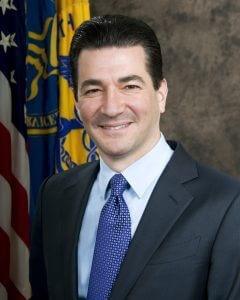
More than a decade before he became commissioner, Gottlieb, as a deputy commissioner, joined with other FDA officials to try to help the pharmaceutical company, Cephalon, secure more fentanyl for Atiq, its lollipop for intense pain, according to the Washington Post. At the time, Cephalon was under investigation for pushing doctors to use the powerful painkiller. The company would later plead guilty.
The 2006 effort to help the drug company did not succeed, the Post reported.
In October 2017, Gottlieb said he regretted the mistakes he made when he was at the FDA before. “We didn’t get ahead of it,” he said, according to a report in USA Today. Nobody got ahead of it.”
Gottlieb proposed expanding access to long-term medication treatments for addiction, partly by exploring ways to increase insurance coverage.
FDA Prompts Opana Withdrawal
As part of its new, more aggressive approach, in June 2017, the FDA urged Endo to take the addictive opioid Opana ER off the market because of concerns about abuse, and the following month, the drug maker agreed to comply. This was the first time American regulators had taken such an action.
In September 2017, drugmaker Intellipharmaceutics International Inc., said the FDA had declined to grant approval of its opioid painkiller, requesting more proof that the drug could prevent abuse. The following month, the FDA refused to approve another opioid painkiller, Dsuvia, made by AcelRx Pharmaceuticals, also because it wanted more evidence that the drug can prevent abuse.
In November 2017, the FDA approved the first device for use in helping reduce symptoms of opioid withdrawal. The device, placed behind the patient’s ear, uses electric stimulation to stimulate cranial nerves with the purpose of relieving withdrawal symptoms, such as sweating, gastrointestinal upset, agitation, insomnia and joint pain. The device can be used for up to five days during acute withdrawal.
PhRMA Backs Limits
In September 2017, the lobbying organization for major pharmaceutical companies, PhRMA (Pharmaceutical Research and Manufacturers of America), announced its support for limiting opioid prescriptions to seven days for treating acute pain.
The Centers for Medicare and Medicaid Services agreed, at the urging of Physicians for Responsible Opioid Prescribing, to remove pain treatment from the survey it uses to rate health care facilities.
The Veterans Administration has reduced its opioids prescriptions by 20 percent and cut the doses for about 17,000 patients, according to a report by Frontline, the PBS documentary program. The report said the VA has also begun screening more patients for depression and substance abuse problems, seeking a more comprehensive approach to treating chronic pain. Still, 68,000 veterans, about 13 percent, take opioids.
VA: Don’t Use Drugs for Chronic Pain
In March 2017, the VA and the Department of Defense updated guidelines for chronic pain. The number one recommendation is not to use the drugs for chronic pain. One of the doctors who pushed for the change told Medscape, “The evidence for opioid therapy working is very minimal and the evidence for harm is substantial. This can be a life-long problem.”
But the path to change has not been smooth. The VA has also faced criticism for abruptly cutting off veterans’ pain medications without alleviating their pain or dealing with their addiction.
VA Opioid Prescriptions Dropping
According to an investigation by the Star Tribune in Minneapolis, the number of opioid prescriptions from the VA spiked 259 percent nationally in the 11 years ending in 2013. The VA adopted regulations in 2009 requiring that doctors treat the causes of pain instead of just prescribing painkillers.
On another front, the DEA has proposed reducing the amount of opioid painkillers that may be manufactured in the U.S. in 2018 by 20 percent.
DEA Head Outlines Risks
“Physicians, pharmacists, and patients must recognize the inherent risks of these powerful medications, especially for long-term use,” DEA Acting Administrator Chuck Rosenberg said in a news release. “More states are mandating use of prescription drug monitoring programs, which is good, and that has prompted a decrease in opioid prescriptions.”
Prescription drug monitoring programs are computer databases that help physicians track whether their patients have received prescriptions for addictive drugs from other providers. They are generally aimed at preventing patients from doctor shopping.
On another front, The Washington Post and Sixty Minutes reported that the DEA has also lost an important tool in its fight against the opioid epidemic. According to a joint investigation by the news organizations, pharmaceutical manufacturers and distributors succeeded in a multifaceted Congressional lobbying effort, which resulted in a 2016 change in the law that severely restricted the federal agency’s ability to halt suspicious opioid shipments. The Post reported the change, which came after more than $1 million was donated to election campaigns, weakened aggressive DEA enforcement efforts.
Congressional Proposals
Members of the Republican-controlled Congress have introduced several proposals to address the crisis. Some examples:
- A bill (H.R. 993) was introduced in Congress in February that would require the Department of Health and Human Services to award grants to states to develop a peer-review process to identify and investigate questionable or inappropriate prescribing and dispensing of certain addictive drugs. The bill would also require the FDA to consider making naxolone available without prescription. And the Government Accountability Office would have to review federal opioid abuse activities and make recommendations to reduce abuse and overdoses. That bill, the Opioid Abuse Prevention and Treatment Act of 2017, co-sponsored by three Democrats and no Republicans, was referred to two committees, but not acted on.
- Another bill (H.R. 3832) that would require the Veterans Administration to participate in state-based prescription drug monitoring programs was introduced in late September. That bill, called the Veterans Opioid Abuse Prevention Act, is sponsored by a Republican, with co-sponsorships by three Republicans and one Democrat.
- A Democratic senator, along with five Democratic co-sponsors, have introduced a bill (S. 1882) called the Opioid Quota Openness, Transparency and Awareness Act to make public information about the process through which pharmaceutical companies gain approval to produce opioids.
- Another Democratic member of the House has proposed a bill (H.R. 3495) that would appropriate $500 million to states to fund their response to the opioid crisis.
- A Democratic senator has proposed a law (S. 1079) that would require the FDA to revoke the approval of opioid pain medication for each new opioid pain medication approved.
- A Democratic senator introduced a bill (H.R. 2063) that would require physicians to receive 12 hours of training at least once every three years regarding pain management treatment, early detection of opioid addiction and the treatment and management of opioid-dependent patients. That bill has 11 cosponsors, all Democrats.
- Another bill by a Democratic senator (S. 1078) would place restrictions on the FDA’s ability to approve opioid drugs. The measure would also require the disclosure of any potential conflicts of interests on behalf of any FDA official involved in the decision to approve the drug. That bill has three cosponsors – a Democrat, a Republican and an independent.
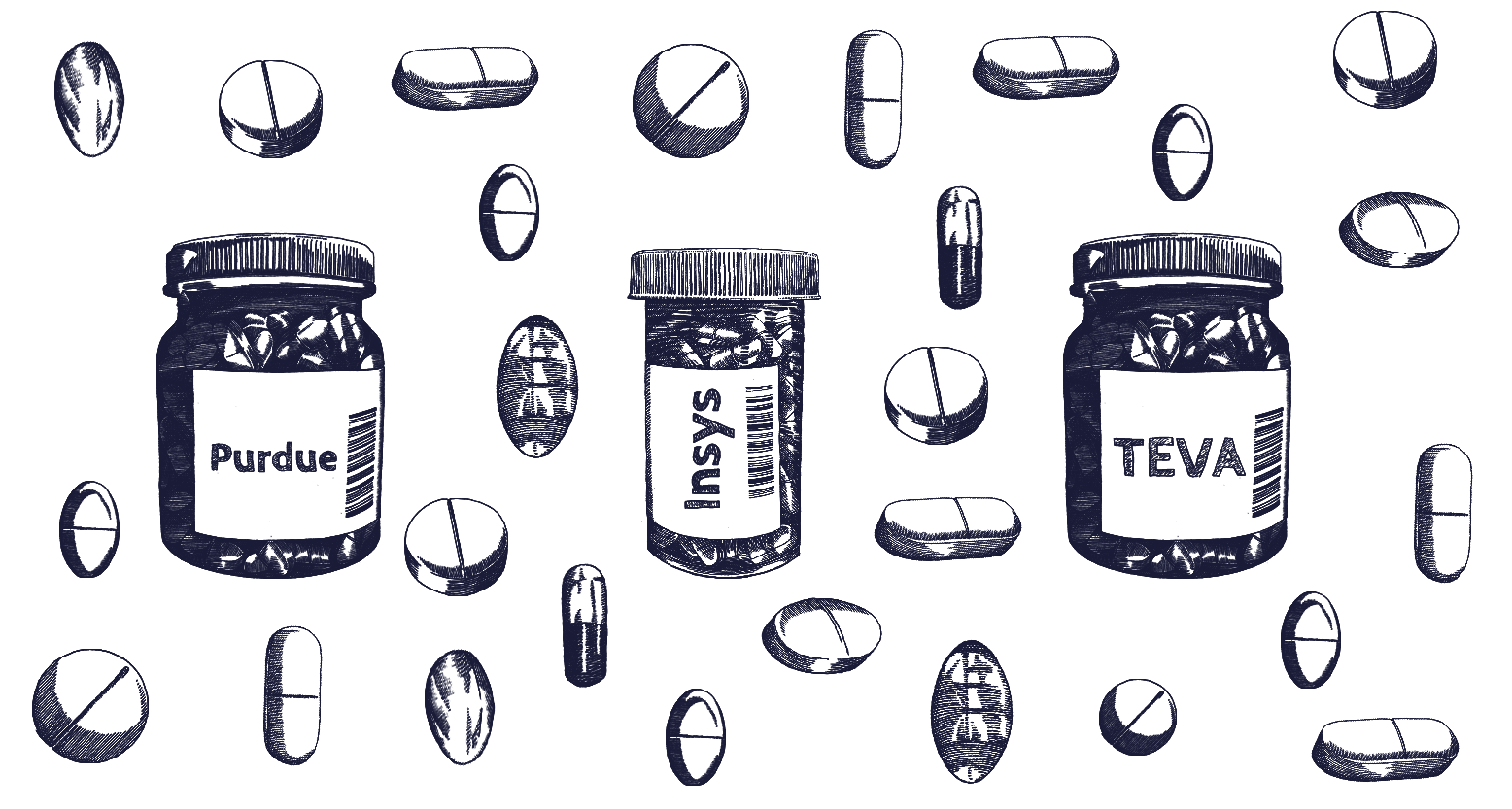
The Companies
Chapter Summary
Purdue Pharma and other companies, large and small, are being cited for their role in the opioid crisis. Each company has been criticized for specific actions they allegedly took to increase their opioid profits at the expense of patient safety.
Several pharmaceutical companies have been cited as playing a role in the opioid crisis. Here are some of them:
Purdue Pharma
Opioid products: OxyContin, Butrans and Hyslingla ER
The majority of lawsuits filed by states, cities and counties against drug makers over the opioid crisis name Purdue Pharma as one of the companies that helped create the epidemic that has killed hundreds of thousands of people.
Purdue’s aggressive marketing of OxyContin has been described as unprecedented and as a large contributor to the opioid crisis. The drug made billions for Purdue, at one point accounting for 90 percent of the company’s sales.
OxyContin Problems Revealed
Last year, the Los Angeles Times published the results of its investigation into the activities of the pharmaceutical giant, based in Stamford, Connecticut, and its blockbuster painkiller, OxyContin, touted to last 12 hours. The L.A. Times found that the drug wears off early, causing severe problems that the company has known about even before OxyContin went on the market.
The newspaper reported that more than 7 million Americans have abused the drug over the past 20 years. The drug has been blamed for setting off the opioid epidemic.
The investigation also looked at the case of a medical clinic run in Los Angeles by a convicted felon and his business partner. The Times showed through emails and other communications that the drug maker was aware that the clinic was a pill mill that was prescribing large quantities of OxyContin, but did nothing to notify authorities until years after the clinic was closed and the operators were prosecuted.
The paper reported: “A Los Angeles Times investigation found that, for more than a decade, Purdue collected extensive evidence suggesting illegal trafficking of OxyContin and, in many cases, did not share it with law enforcement or cut off the flow of pills. A former Purdue executive, who monitored pharmacies for criminal activity, acknowledged that even when the company had evidence pharmacies were colluding with drug dealers, it did not stop supplying distributors selling to those stores.”
Purdue Made $31B From OxyContin
Others have reported that Purdue Pharma spent about $30 million a year marketing OxyContin for a decade, earning $31 billion in revenue from it.
Other reports have noted that the marketing plan included sophisticated data used to influence physicians’ prescribing. Purdue would target doctors who were the highest prescribers of opioids, compiling a database to help identify physicians with high numbers of chronic-pain patients and others who frequently prescribed opioids. Purdue sales representatives were given generous bonuses when they increased sales of OxyContin. The reps could double or triple their salaries. In 2001, Purdue paid $40 million in sales incentive bonuses.
The Government Accountability Office said that Purdue used a patient-starter coupon program for OxyContin that encouraged physicians to give patients coupons to get their first 30-day OxyContin prescriptions for free through a participating pharmacy. The program ran intermittently for four years, starting in 1998, changing along the way to free seven-day supplies. By the time the program ended in 2001, about 34,000 coupons had been redeemed.
GAO Calls Campaign ‘Unprecedented’
The OxyContin marketing campaign also included swag given to health care providers, including OxyContin fishing hats, stuffed toys, coffee mugs, music compact discs, luggage tags and pens with pull-out conversion charts to help calculate dosages for OxyContin.
The Government Accountability Office said this promotion was “unprecedented among schedule II opioids, and was an indicator of Purdue’s aggressive and inappropriate marketing of OxyContin.”
In 2007, Purdue Pharma paid $600 million to resolve criminal charges it misbranded OxyContin. The company and three current and former executives pleaded guilty in federal charges that the company misled doctors and patients when it claimed OxyContin was less likely to be abused than other drugs.
According to an investigation by the New Hampshire Attorney General’s Office, Purdue sales representatives blanketed that state between 2013 and 2015, giving doctors the message that opioids were “safe, safe, safe, safe.”
The company settled a lawsuit filed by the New York attorney general in 2016 over its OxyContin practices. Purdue agreed to pay $75,000 in that case and to strengthen its internal program aimed at preventing sales staff from promoting the drug to health care providers who may be involved in abuse and illegal sectionersion of drugs. Further, Purdue agreed to disclose its financial relationships with people, including doctors, who appear on the company’s “unbranded” websites that endorse the benefits of pain treatment.
Purdue’s Abuse-Deterrence Response
In 2010, Purdue launched a reformulation of OxyContin, purportedly to make it more resistant to being abused. The company then asked the FDA to withdraw its approval of the original OxyContin as unsafe. The effect was to prevent other companies from making generic versions of the drug, which was about to lose patent protection, according to the New Hampshire Attorney General. Using abuse-deterrence as a marketing advantage, the company suggested to doctors that the new version was also less addictive.
Purdue responds to criticism by saying it, too, is concerned about the opioid crisis and is taking steps to address it by developing abuse-deterrent drugs. It says it has for years funded programs and provided resources to support the responsible use of prescription opioids. The company also endorses policies, such as limiting the duration of a patient’s first opioid prescription and using prescription drug monitoring programs.
The company also endorses increased access to medication-assisted treatment for opioid use disorder.
Insys Therapeutics
Opioid product: Subsys
Insys was co-founded in 2002 by Dr. John Kapoor, described in an investigation report as “a serial pharmaceutical industry entrepreneur know for applying aggressive marketing tactics and sharp price increases on older drugs.”
Kapoor, 74, a member of Insys board of directors, was arrested on Oct. 26, 2017, on charges he and six other former executives led a nationwide conspiracy to profit using bribes and fraud to cause the illegal distribution of the fentanyl spray Subsys.
Other than Subsys — a sublingual fentanyl spray approved only for breakthrough cancer pain — the only other product the Chandler, Arizona, company listed on its website in October 2017 is Syndros, a prescription used to treat loss of appetite in AIDS patients and nausea and vomiting caused by chemotherapy.
The company, its officials and health care workers that had relationships with the company, are being investigated by federal and state authorities in more than a dozen jurisdictions, according to a filing the company made with the U.S. Securities and Exchange Commission.
For example, Insys says it was subpoenaed by the inspector general for the Department of Health and Human Services in connection with an investigation by the U.S. Attorney’s Office for the Central District of California. The documents requested included some pertaining to the marketing of Subsys. “We believe a loss is probable with respect to this investigation,” the company wrote on its SEC filing.
Federal Investigations
The filing also mentions investigations by federal prosecutors in Massachusetts, Alabama and New York.
Insys, according to McCaskill’s investigation report, established a unit with a mission to overcome barriers erected by insurance companies against paying for Subsys for uses that were not approved. Members of the unit would pose as doctors’ office employees and create the impression that patients had breakthrough cancer pain when they did not.
The company has agreed to pay $9.5 million to settle lawsuits from four states over its marketing practices related to Subsys.
For example, according to the New Hampshire Attorney General, the majority of Subsys prescriptions in the state were written by one physician assistant, Christopher Clough, who was a frequent speaker with the Insys Speaker Bureau.
Top Prescriber Hosted Gatherings
Clough was paid $44,000 for speaking at about 40 events for Insys as he became the highest prescriber of Subsys in New Hampshire and one of the top Subsys prescribers in the country. Some of the events where Clough was paid to speak were shams that didn’t include anyone who could prescribe the drug, but rather were social gatherings at expensive restaurants attended by Clough’s friends and coworkers. Clough’s physician’s assistant license was subsequently revoked.
In addition to the civil allegations, former company executives, managers and employees face criminal charges, including a federal indictment against its former CEO and five other former executives, who are accused of conspiring to bribe doctors. The company is also accused of trying to make patients without cancer appear to have cancer so it could increase sales of its drug for cancer pain.
Criminal charges include:
- A former district sales manager was indicted in June 2017 on charges of wire fraud and aggravated identity theft for allegedly falsifying sign-in sheets for the speaker programs.
- A former manager of the company patient services unit was indicted in October 2016 on a charge of conspiracy to commit wire fraud.
- A former northeast district sales manager was charged with violating the anti-kickback statute.
- A former employee has pleaded guilty in June 2017 to conspiring to defraud insurers and a nurse practitioner who was part of their speaker’s bureau pleaded guilty in 2015 to violating the federal anti-kickback statute for receiving $83,000 from Insys.
In general, the requests from the state attorneys general relate to the marketing of Subsys, according to the SEC filing.
In a statement to the Arizona Republic, the company said, “Insys continues to cooperate with all relevant authorities in its ongoing investigations and is committed to complying with laws and regulations that govern our products and business practices.”
Insys Pledges to Follow ‘High Ethical Standards’
New Jersey sued Insys in October 2017, accusing the drug maker of engaging in a fraudulent scheme to increase sales of Subsys.
After New Jersey’s Attorney General called the company “evil” and filed its lawsuit, the company released a statement to a newspaper there, the Courier-Post, that it was trying to “prevent the mistakes of the past from happening in the future.”
In 2017, the company installed a new president and CEO, and other high-ranking executives.
The statement continued: “While understandable, it’s disingenuous to repeatedly demonize a company that has made a firm and sincere commitment and is taking all the necessary steps to conduct business according to high ethical standards,” the company asserted.
Teva Pharmaceuticals (Cephalon)
Opioid Products: Actiq, Fentora
Israel-based Teva Pharmaceuticals acquired its subsidiary, Pennsylvania-based Cephalon, in 2011.
The companies are defendants in numerous lawsuits alleging their marketing practices contributed to the opioid crisis. In addition, a coalition of state attorneys general has requested documents relating to opioid marketing.
According to lawsuits, the companies marketed the powerful fentanyl drug Actiq and its successor Fentora for chronic pain uses even though they were approved only for a specific form of cancer pain. Actiq was approved in 1995 for cancer patients who had developed tolerance to other opioids. Because of the potential for life-threatening side effects, the FDA required that the drug’s label say that it should not be used in patients who did not have a tolerance for opioids.
Suits Allege Illegal Marketing
In spite of the dangers, the lawsuits allege that Cephalon actively marketed these potent drugs for conditions that included back pain, headaches, pain from sports injuries and other non-cancer conditions.
Initial sales for Actiq were in the tens of millions of dollars. But by 2005, they had reached $412 million, according to court filings. As Actiq was losing its patent protection, Cephalon purchased Fentora and obtained approval from the FDA in September 2006.
Like Actiq, Fentora was approved only for breakthrough cancer pain in patients with opioid tolerance. The approval came with a requirement for a black box warning — the most serious kind of warning — about the fact that people had died when receiving the drug in circumstances other than what was approved.
The lawsuits say after the approval, Cephalon “immediately shifted 100 general pain sales representatives from Actiq to Fentora to the same doctors for unapproved uses.
Feds: Cephalon Promoted Opioid for Unapproved Uses
“Cephalon billed Fentora as a major advance that offered a significant upgrade in the treatment of breakthrough pain generally — not breakthrough cancer pain in particular — from Actiq,” according to a lawsuit filed by the City of Chicago.
In 2007, according to a transcript of a call with financial analysts, a Cephalon vice president talked about the opportunity for Fentora to be used for cancer patients, as well as “lower back pain and breakthrough neuropathic pain.”
In 2008, Cephalon agreed to pay $425 million to settle a federal criminal civil case alleging that between 2001 and at least 2006, the company promoted drugs, including Actiq, for uses that had not been approved.
According to the U.S. Department of Justice, Cephalon promoted Actiq for such maladies as migraines, sickle-cell pain, injuries and in anticipation of changing wound dressings or radiation therapy. The company also promoted the drug for use in patients who were not opioid tolerant.
The agency said Cephalon trained its sales force to disregard FDA restrictions.
Feds: Off-Label Uses Promoted
Repeating the mantra “pain is pain,” the company told its sales reps to focus on doctors who were not oncologists, including general practitioners, and to promote the drug for many uses beyond the approved breakthrough cancer pain.
Representatives even visited psychiatrists to promote the drug for anxiety and other psychiatric conditions. The company structured its sales quotas and bonuses in a way that the representatives could reach their goals only if the drug was sold for off-label use.
The company also paid medical professionals to speak to doctors about off-label uses of the drugs and funded continuing medical education programs with millions of dollars in grants, to promote off-label uses, the justice department said.
FDA Warning Covered Misleading Advertising
According to court filings, the FDA warned Cephalon in 2009 that it was using misleading advertising to promote Fentora directly to patients, implying the drug could be used in cancer patients with breakthrough pain who had not developed opioid tolerance. The advertisements also failed to convey the risks of taking the drug.
In court documents, Teva argues that that off-label uses of drugs are legal, as opposed to off-label promoting. “Thus, in exercising their independent medical judgment, doctors are free to prescribe a medicine—including Actiq or Fentora—to treat any condition or symptom, regardless of whether the condition or symptom is covered by the FDA-approved labeling,” the company says.
Johnson & Johnson’s Janssen Pharmaceuticals
Opioid Products: Durogesic, Sublimaze, Jurnista, Nucynta, Nucynta ER, Ultracet, Ultram
As with the other companies, Johnson & Johnson and its pharmaceutical subsidiary, Janssen, both based in New Jersey, have been the target of numerous lawsuits and an investigation by state attorneys general over their role in the opioid epidemic.
Court documents say Janssen’s opioids generated a total of $4.7 billion in revenue between 2009 and 2012.
Suits: Risks Downplayed
Lawsuits allege Janssen downplayed the dangers of some of its opioids while over-promoting them. For instance, the company is accused of distributing posters to doctors’ offices that suggested Ultracet could help maintain an active lifestyle, in the absence of evidence supporting that.
The company also had a web-based video series hosted by veteran television journalist Carol Martin, a show called Let’s Talk Pain.
In one show, the guest bemoaned the idea that doctors were hesitant to prescribe opioids that patients need.
‘Tolerability’ Claim Unfounded, Suits say
Lawsuits also allege Janssen misleadingly marketed its drugs as safer than they are.
One online brochure, for example, included the “fact” that opioids are rarely addictive when used properly for pain management. In another instance, Janssen allegedly marketed Nucynta for its “tolerability,” which is not supported by the evidence of its addictive properties.
Janssen denies wrongdoing with its opioids.
“We believe that we have acted appropriately, responsibly and in the best interests of patients regarding our opioid pain medications, which are FDA-approved and carry FDA-mandated warnings about the known risks of the medications on every product label,” Jessica Castles Smith, a spokesperson for Janssen Pharmaceuticals, told the Center for Public Integrity.
Endo Pharmaceuticals
Opioid Products: Opana, Opana ER, Percocet
With U.S. headquarters in Malvern, Pennsylvania, Endo Pharmaceuticals was the first company to receive a request from the FDA that it remove a product from the market — Opana ER — because of its addictive qualities. On July 6, 2017, about a month after the FDA made the request, Endo announced it would withdraw Opana ER.
Opana ER has made hundreds of millions of dollars for Endo, with peak revenue of $198 million in 2014.
The drug is more potent than OxyContin. After OxyContin was reformulated in 2010, law enforcement in rural areas of the country reported an increase in Opana abuse. Opana was reformulated in 2012 to make it harder to crush or snort. But addicts figured out how to make the drug injectable, leading to an outbreak of HIV in Indiana in 2015.
Endo Settles Opana ER Case
In 2016, Endo paid $200,000 to settle a case brought by New York Attorney General Eric T. Schneiderman over its marketing of the opioid drug. Endo also agreed to change its marketing by ending all misrepresentations regarding the properties of Opana ER.
In a news release, Schneiderman’s office noted that the use of prescription opioids to manage chronic non-cancer pain had increased ten-fold over the past 20 years in the United States, bringing with it an increase in opioid-related health problems.
According to the New York City Department of Health and Mental Hygiene:
- The number of opioid painkiller prescriptions filled by New York City residents increased by 31 percent, from approximately 1.6 million to approximately 2.2 million, between 2008 and 2011
- Along with that came a sharp increase in opioid addiction, overdose deaths and heroin use. Annual deaths involving opioid painkillers increased five-fold from 179 to 883, between 2003 and 2012
- In Nassau County alone, hundreds of people were seeking treatment for addiction to Opana ER every month.
Schneiderman said Endo marketed Opana ER as crush resistant, when the company’s own research found that the pill could be crushed and ground. The company told its sales representatives to downplay the risks associated with the drug, including the risk of addiction.
According to the New York settlement and the lawsuit filed by the city of Chicago against Endo and other pharmaceutical companies, Endo said on a website it funded that “People who take opioids as prescribed usually do not become addicted.”
According to the legal complaint, a 2004 Endo publication titled Understanding Your Pain: Taking Oral Opioid Analgesics tells patients that, “Taking opioids as prescribed for pain relief is not addiction.”
Abuse-Resistant Claim Called misleading
The complaint alleges Endo misleadingly marketed Opana ER as abuse resistant — the “only oxymorphone extended release tablets that are designed to be crush resistant” — when it knew that it could be abused in other ways. According to the New York settlement, Endo’s own studies showed the drug could be ground with a coffee grinder or chewed.
In fact, an internal company document showed that a consultant told the company in February 2013 that not only did the data not establish that the reformulated drug was tamper resistant, there were reports that the reformulated drug was subject to higher levels of abuse via injection.
Addiction Assertions
The Chicago lawsuit also accuses Endo of sponsoring Continuing Medical Education courses in 2011 that downplayed addiction risks, while touting the benefits of opioids for persistent pain in the elderly.
According to the New York settlement, Endo provided training materials to its sales representatives saying that “symptoms of withdrawal do not indicate addiction,” when withdrawal is actually a symptom of opioid-use disorder. Endo’s training materials also included assertions that addiction to opioids is not common.
‘Pseudoaddiction’
The New York settlement also says Endo trained its sales reps to discuss the concept of “pseudoaddiction,” a condition in which patients have symptoms of addiction, but are not addicted. This concept “has never been empirically validated and in fact has been abandoned by some of its proponents,” the settlement says.
An Endo official told the attorney general’s office that he wasn’t aware of any research validating the concept, and it would take “a really good clinician” or behavioral scientist to distinguish between addiction and pseudoaddiction.
Endo Accused of Targeting Overprescribers
The New York settlement also described Endo sending sales staff out repeatedly to the offices of doctors who were excessively and illegally prescribing opioids, many of whom were ultimately prosecuted.
In one instance, a sales representative told the attorney general’s staff that the office of a cardiologist was:
- “Just very crowded….people looking to fill their prescriptions, younger demographic…”
- “People just looking for pills …”
- “A lot of these were patients, if I recall, looked like they were looking for meds to get high on.”
That sales rep never told anyone at Endo about what he had seen at that cardiologist’s office. The doctor was ultimately sentenced to three years in prison for health care fraud. Sales representatives for Endo had visited his office 79 times between January 2009 and July 2012.
When Endo announced in July 2017 that it was withdrawing Opana ER from the market, the company emphasized that there had not been a finding that the drug was not safe or effective when taken as prescribed.
“To the contrary,” the company added, “Endo remains confident in the clinical research and other data demonstrating Opana ER’s safety and efficacy, as well as its favorable risk-benefit profile when used as intended in appropriate patients.”

Profiting from the Solutions
Chapter Summary
Now that solving the opioid crisis has become a national priority, drug companies are looking for a piece of that action. As government officials search for answers, pharma executives have a seat at the table, providing suggestions for how they can help treat addicted patients and create and sell less-addictive pain medications.
Some pharmaceutical companies are benefitting financially from addressing the crisis that was fueled by drug manufacturers.
For example, the lobbying group that represents pharmaceutical manufacturers, PhRMA, recommends expanding access to overdose reversal drugs and medication-assisted treatments for addiction. PhRMA also supports accelerating development of abuse-deterrent formulations of opioid medications and non-opioid pain drugs.
The federal government plans to send $1 billion in new addiction and prevention treatment funds to states in the next two years.
Execs Seek Faster Opioid Alternative Approvals
When President Trump’s opioid crisis commission met in September 2017, it heard from pharmaceutical executives asking for quicker regulatory approval for opioid alternatives. Gov. Christie also announced public-private partnerships between pharmaceutical companies and the National Institutes of Health to develop non-addictive pain treatments. The commission met with companies including Purdue Pharma, Johnson & Johnson and Allergan.
Among the recommendations of the commission’s report was establishing and funding federal incentives to increase access to medication-assisted treatment.
The report also suggested various measures increase naxolone dispensing and requiring naxolone to be prescribed with high-risk opioid prescriptions. The commission urged that naxoline be “in the hands of every law enforcement officer in the United States.”
Several companies manufacture nalaxone, which has saved countless lives when administered to people who have overdosed.
Drug Reverses Opioid Overdoses
The drug reverses the life-threatening effects of an opioid overdose. It was originally approved by the FDA under the brand name Narcan and is now available in a number of generic versions.
In an unusual arrangement, one of the manufacturers, Pfizer, agreed in May 2017 to provide the state of Louisiana with 60,000 vials of the drug, valued at $1 million, to settle a case it had tried to block sales of generic versions of a completely different drug.
Pfizer, along with Mylan, Amphastar, Adapt Pharma and Kaleo have come under fire for the rising cost of the drug, which has increased tenfold in recent years. One version of the drug rose 17-fold in price in two years.
Aggressive Marketing for Treatments
In the meantime, while drugmakers work to get new medication-based addiction treatments approved for the market, some pharmaceutical companies are maneuvering to position their treatment drugs as the go-to option.
A prominent example of this is Vivitrol, which is made by Alkermes, a small biotech company in Massachusetts. The drug — one of three approved by the FDA to treat opioid addiction — is injected monthly and acts by blocking the brain’s opioid receptors.
The New York Times, Pro Publica and NPR have reported that the company is aggressively promoting the drug using lobbyists, millions of dollars in political donations, and other means. It is particularly targeting the justice system, including drug court judges.
Push for Vivitrol Questioned
Critics say the marketing is pushing the drug ahead of other, more-studied, less expensive alternatives. They also say it’s inappropriate for judges to make health care decisions because they aren’t doctors. In some courts, as a result of the strategy, Vivitrol is the only medication option offered to drug defendants.
Moreover, experts say there’s little evidence proving Vivitrol works any better than the established alternatives.
Another company, Braeburn Pharmaceuticals, is marketing an implant to treat opioid addiction priced at nearly $5,000 for six months.
Researchers are also exploring the possibility of vaccines that would target opioids in the bloodstream and preventing them from creating euphoric effects in the brain.
States Allege Antitrust Violations
The main options for addiction treatment are buprenorphine (Suboxone made by Reckittt Benckiser) and methadone. Both drugs are opioids themselves and have been standard treatment for years.
A coalition of 35 states and the District of Columbia have sued Reckitt Benckiser, a British company, accusing it of antitrust violations in maneuvers the company allegedly made to keep Suboxone from being made generically.
On Nov. 30, 2017, the FDA approved a once-a-month buprenorphine injection for the treatment of moderate-to-severe opioid use disorder.
Kolodny of Physicians for Responsible Opioid Prescribing told Newsweek that the approval could be a “game changer” that may lead to more patients having access to the treatment drug.
The approval for the drug called Sublocade was granted to Indivior Inc., formerly known as Reckitt Benckiser Pharmaceuticals, the maker of Suboxone, and one of the defendants in the states’ antitrust lawsuit.
Another path pharmaceutical companies are pursuing is the development of non-opioid alternatives for treating pain. Purdue Pharma, among others, has focused on developing such painkillers.
PhRMA Announces Plan to Address Crisis
The Pharmaceutical Research and Manufacturers of America (PhRMA), which represents major drug makers, announced on Dec. 12 what it called a “major commitment to address the opioid crisis in America.” PhRMA said it was joining forces with the Addiction Policy Forum to fund a multi-year, multimillion dollar initiative to fund state and local programs for people affected by the crisis.
The pair endorsed policy initiatives to limit opioid medication prescriptions to seven days for acute pain, with clear exemptions, mandate prescriber training to ensure appropriate treatment of addiction and pain, and make it easier for patients to have appropriate insurance coverage.
PhRMA said it’s also working with the National Institutes of Health and the National Institute on Drug Abuse to facilitate the introduction of non-opioid pain relievers and medications to treat addiction.
PhRMA’s announcement and drug makers’ active involvement with government officials and regulators trying to find answers to the opioid crisis ensure Big Pharma will help decide how to how to solve a problem that experts believe it helped create. It’s not clear what effect this will have on efforts to make the companies pay and be held accountable for the damage.
98 Cited Research Articles
Drugwatch.com writers follow rigorous sourcing guidelines and cite only trustworthy sources of information, including peer-reviewed journals, court records, academic organizations, highly regarded nonprofit organizations, government reports and interviews with qualified experts. Review our editorial policy to learn more about our process for producing accurate, current and balanced content.
- Moghe, S. (2016, October 14). Opioid history: From ‘wonder drug’ to abuse epidemic. Retrieved from: https://www.cnn.com/2016/05/12/health/opioid-addiction-history/index.html
- Portenoy, R.,K. et al. (1986, May 25). Chronic use of opioid analgesics in mon-malignant pain: report of 38 cases. Retrieved from: https://www.ncbi.nlm.nih.gov/pubmed/2873550
- Centers for Disease Control and Prevention. (n.d.) Drug overdose deaths in the United States continued to increase in 2015. Retrieved from: https://www.cdc.gov/drugoverdose/epidemic/index.html
- Ramadan, L. (2017, July 19). Breaking: Delray will sue Big Pharma for ‘scourge of opioid addiction.’ Retrieved from: https://www.nytimes.com/2007/05/11/business/worldbusiness/11iht-oxy.1.5665287.html?mtrref=undefined&gwh=87766C6292F0567FE3F1838A22E3BCE5&gwt=pay
- Dahl, June. (2006, April 12). Oral History Interview. Retrieved from: https://minds.wisconsin.edu/handle/1793/56924
- Nedelman, M. (2017, July 31). Doctors increasingly face charges for patient overdoses. Retrieved from: https://www.cnn.com/2017/07/31/health/opioid-doctors-responsible-overdose/index.html
- Higham, S., et al. (2017, July 4). Drugmakers and distributors face barrage of lawsuits over opioid epidemic. Retrieved from: https://www.washingtonpost.com/investigations/drugmakers-and-distributors-face-barrage-of-lawsuits-over-opioid-epidemic/2017/07/04/3fc33c64-5794-11e7-b38e-35fd8e0c288f_story.html?utm_term=.01617ee6ef63
- Jacobs, H. (2016, May 26). This one-paragraph letter may have launched the opioid epidemic. Retrieved from: https://www.businessinsider.com/porter-and-jick-letter-launched-the-opioid-epidemic-2016-5
- Ornstein, C., et al. (2012, May 8). American Pain Foundation Shuts Down as Senators Launch Investigation of Prescription Narcotics. Retrieved from: https://www.propublica.org/article/senate-panel-investigates-drug-company-ties-to-pain-groups
- The Poison Review. (2012, December 16). The money and influence behind “Pain as the Fifth Vital Sign.” Retrieved from: http://www.thepoisonreview.com/2012/12/16/the-money-and-influence-behind-pain-as-a-fifth-vital-sign/
- McShane, L. (2017, June 24). How Big Tobacco-style marketing propels U.S.opioid crisis – and powers $400B pharma industry. Retrieved from: https://www.nydailynews.com/news/national/big-tobacco-style-marketing-propels-u-s-opioid-crisis-article-1.3274960
- Hawkins, D., (2017, June 2). How a short letter in a prestigious journal contributed to the opioid crisis. Retrieved from: https://www.washingtonpost.com/news/morning-mix/wp/2017/06/02/how-the-opioid-crisis-traces-back-to-a-five-sentence-scholarly-letter-from-1980/?utm_term=.7ba9d62f9b69
- Leung, P.T.M. (2017, June 1). A 1980 Letter on the Risk of Opioid Addiction. Retrieved from: https://www.nejm.org/doi/full/10.1056/NEJMc1700150
- Offit, P.A. (2017, April 1). The Doctors Who Started the Opioid Epidemic. Retrieved from: https://www.thedailybeast.com/the-doctors-who-started-the-opioid-epidemic
- Chen, D., et al. (2017, June 6). Two Utah doctors caught in spotlight of opioid lawsuits. Retrieved from: https://www.deseret.com/2017/6/6/20613595/two-utah-doctors-caught-in-spotlight-of-opioid-lawsuits
- Armstrong, D. (2017, March 24). TV documentary on pain treatment funded by doctor with industry ties. Retrieved from: https://www.statnews.com/2017/03/24/pain-documentary-public-television/
- U.S. Department of Health and Human Services. (n.d.). The Opioid Epidemic: By the Numbers. Retrieved from: https://www.hhs.gov/opioids/
- Gusovsky, D., (2016, April 27). Americans consume vast majority of the world’s opioids. Retrieved from: https://www.cnbc.com/2016/04/27/americans-consume-almost-all-of-the-global-opioid-supply.html
- Express Scripts. (2014, December 9). A Nation in Pain: U.S. Opioid Trends. Retrieved from: https://www.express-scripts.com/corporate/drug-trend-report/nation-pain-us-opioid-trends
- Fauber, J. (2012, February 19). Follow the Money: Pain, Policy and Profit. Retrieved from: https://www.medpagetoday.com/neurology/painmanagement/31256
- Perrone, M., et al. (2016, September 19). Pro-painkiller echo chamber shaped policy amid drug epidemic. Retrieved from: https://publicintegrity.org/2016/09/19/20201/pro-painkiller-echo-chamber-shaped-policy-amid-drug-epidemic
- Guastavino, T.D. (2016, October 6). Making pain a vital sign caused the opioid crisis. Here’s how. Retrieved from: https://www.kevinmd.com/blog/2016/10/making-pain-vital-sign-caused-opioid-crisis-heres.html
- Mularski, R.A., et al. (2006, June 2). Measuring Pain as the 5th Vital Sign Does Not Improve Quality of Pain Management. Retrieved from: https://www.ncbi.nlm.nih.gov/pmc/articles/PMC1924634/
- Government Accountability Office. (2003, December). Prescription Drugs. OxyContin Abuse and Diversion and Efforts to Address the Problem. Retrieved from: https://www.gao.gov/assets/gao-04-110.pdf
- Radelat, A., (2017, July). Growing number of states press opioid suits against Stamford’s Purdue Pharma. Retrieved from: https://www.hartfordbusiness.com/article/growing-number-of-states-press-opioid-suits-against-stamfords-purdue-pharma
- Feeley J. et al. (2017, August 15). Big Pharma’s Tobacco Moment as Star Lawyers Push Opioid Suits. Retrieved from: https://www.bloomberg.com/news/articles/2017-08-15/south-carolina-joins-states-suing-purdue-pharma-over-opioids
- Berman, S. (2014, July 22). Big Pharma’s Love Affair with Opioids. Retrieved from: https://www.hbsslaw.com/blog/big-pharmas-love-affair-with-opioids
- City of Everett, a Washington municipal corporation v. Purdue Pharma et al. (2017, Jan. 19). Superior Court of the State of Washington in and for Snohohish County. Complaint. Retrieved from: https://everettwa.gov/1681/Purdue-Lawsuit
- City of Everett, a Washington municipal corporation v. Purdue Pharma et al. (2017, March 20). United States District Court Western District of Washington at Seattle. Case No. 2:17cv209. Defendant’s Motion to Dismiss.
- City of Everett, a Washington municipal corporation v. Purdue Pharma et al. (2017, September 25). United States District Court Western District of Washington at Seattle. Case No. 2:17cv209. Order Granting in Part and Denying in Part Defendants’ Motion to Dismiss. Retrieved from: https://web.archive.org/web/20171115110454/https://everettwa.gov/DocumentCenter/View/11904
- Raymond, N. (June 19, 2017). Ex-Insys employee pleads guilty in U.S. opioid drug probe. Retrieved from: https://www.reuters.com/article/us-insys-court/ex-insys-employee-pleads-guilty-in-u-s-opioid-drug-probe-idUSKBN19A2MB
- Altucker, K. (2017, June 23). Former executives of Chandler company face investigations over opioid spray, patient deaths. Retrieved from: https://www.azcentral.com/story/money/business/health/2017/06/24/legal-troubles-chandler-insys-opioid-fentanyl-deaths-doctor-bribes-accusations/416645001/
- Raymond, N. (2017, January 19). Insys to pay $3.4 million to resolve New Hampshire fentanyl drug probe. Retrieved from: https://www.reuters.com/article/health-insys/insys-to-pay-3-4-million-to-resolve-new-hampshire-fentanyl-drug-probe-idUSL1N1F92FN
- Schencker, L. (2017, August 18). Opioid drugmaker settles with Illinois for $4.5 million. Retrieved from: https://www.chicagotribune.com/business/ct-insys-illinois-settle-0819-biz-20170818-story.html
- Office of Attorney General Chris Carr. (2017, September 19). Attorney General Chris Carr, Multistate Coalition to Seek Documents from Opioid Manufacturers. Retrieved from: https://law.georgia.gov/press-releases/2017-09-19/attorney-general-chris-carr-multistate-coalition-seek-documents-opioid
- City of Chicago v. Purdue Pharma et al. Complaint. (2014, June 2). Circuit Court of Cook County, Illinois.
- U.S. Senate Homeland Security & Governmental Affairs Committee, Ranking Member’s Office. (2017, September). Retrieved from: https://www.documentcloud.org/documents/3987564-REPORT-Fueling-an-Epidemic-Insys-Therapeutics.html
- Peterson-Withorn, C. (2016, June 29). Fortune of Family Behind OxyContin Drops Amid Declining Prescriptions. Retrieved from: https://www.forbes.com/sites/chasewithorn/2016/06/29/fortune-of-family-behind-oxycontin-drops-amid-declining-prescriptions/#38bca9463411
- Homeland Security Governmental Affairs. (2017, March 28). Breaking: Opioid Manufacturers Are Subject of New McCaskill-Led, Wide-Ranging Investigation. Retrieved from: https://www.hsgac.senate.gov/media/dems/breaking-opioid-manufacturers-are-subject-of-new-mccaskill-led-wide-ranging-investigation/
- Gart, M., (2017, April 26). Dr. Myles Gart: Pain is not a patient’s fifth vital sign. Retrieved from: https://omaha.com/opinion/dr-myles-gart-pain-is-not-a-patient-s-fifth/article_bd8f7336-a8cf-560d-8572-42add22c6640.html
- Childress, S. (2016, March 28). Veterans Face Greater Risks Amid Opioid Crisis. Retrieved from: https://www.pbs.org/wgbh/frontline/article/veterans-face-greater-risks-amid-opioid-crisis/
- Brunswick, M. (2015, July 12). VA doctors freely handed out pain medications to veterans for years. Then they stopped. The results have sometimes turned tragic. Retrieved from: https://www.startribune.com/cut-off-veterans-struggle-to-live-with-va-s-new-painkiller-policy/311225761/
- Centers for Medicare and Medicaid Services. (2016, August. 24). Letter to Physicians for Responsible Opioid Prescribing. Retrieved from: https://gallery.mailchimp.com/3c5a9b062bd9e19d358b52709/files/CMS_Letter.pdf
- Brauser, D. (2017, March 17). New VA, DoD Opioid Guideline Warns Against Long-Term Use. Retrieved from: https://www.medscape.com/viewarticle/877350?pa=Hd8m%2Ba%2BJoZywhyRaOg5%2Fo1iXCjLaqJ4bWHDLKgcrhIiGt3HuGkT0AmUHN3nykTWQcFrqow%2Bf2%2F37XuRaZT6JAA%3D%3D
- Grover, D. (2017, September 235). FDA declines to approve Intellipharma’s opioid painkiller. Retrieved from: https://www.reuters.com/article/legal-intellipharma-fda/fda-declines-to-approve-intellipharmas-opioid-painkiller-idUSKCN1C02G5
- Santhanam, L. (2017, March 29). Here’s what Trump’s new executive order means for opioid addiction. Retrieved from: https://www.pbs.org/newshour/health/heres-trumps-new-executive-order-means-opioid-addiction
- PhRMA. (2017, September 27). PhRMA Announces Support for Seven-Day Script Limit on Opioid Medicines for Acute Pain. Retrieved from: https://www.phrma.org/press-release/phrma-announces-support-for-seven-day-script-limit-on-opioid-medicines-for-acute-pain
- Racioppi, D. (2017, September 27). Pharma execs urge quicker FDA approval for opioid alternatives. Retrieved from: https://www.usatoday.com/story/news/nation-now/2017/09/27/pharma-execs-urge-quicker-fda-approval-opioid-alternatives/710296001/
- Pritchett, A.M. (2016, May 6). Stopping opioid abuse. Retrieved from: https://catalyst.phrma.org/stopping-opioid-abuse
- Congress.gov. (2017, February 10). H.R. 993 – Opioid Abuse Prevention and Treatment Act of 2017. Retrieved from: https://www.congress.gov/bill/115th-congress/house-bill/993
- Congress.gov. (2019, September 26). H.R., 3832- Veterans Opioid Abuse Prevention Act. Retrieved from: https://www.congress.gov/bill/115th-congress/house-bill/3832?r=62
- Drug Enforcement Administration. (2017, August 4). DEA proposes reduction to amount of controlled substances to be manufactured in 2018. Retrieved from: https://www.dea.gov/press-releases/2017/08/04/dea-proposes-reduction-amount-controlled-substances-be-manufactured-2018
- Bernstein, L. (2017, April 24). Nominee to head FDA joined effort to get a drug company more fentanyl. Retrieved from: https://www.washingtonpost.com/national/health-science/nominee-to-head-fda-joined-effort-to-get-a-drug-company-more-fentanyl/2017/04/24/ea761518-26ad-11e7-bb9d-8cd6118e1409_story.html?utm_term=.18a63224bc85
- Richland Source. (2017, September 28). Brown introduces bill to ensure transparency, accountability in DEA quotas for painkillers. Retrieved from: https://www.richlandsource.com/news/brown-introduces-bill-to-ensure-transparency-accountability-in-dea-quotas/article_dce6ca62-a477-11e7-ae50-0b86eb91df10.html
- Congress.gov. (2017, September 28). S 1882 – A bill to amend the Controlled Substances Act to require the Attorney General to make procurement quotas for opioid analgesics publicly available, and for other purposes. Retrieved from: https://www.congress.gov/bill/115th-congress/senate-bill/1882?r=1
- Congress.gov. (2018, July 27). H.R., 3495. Opioid and Heroin Abuse Crisis Investment Act of 2017. Retrieved from: https://www.congress.gov/bill/115th-congress/house-bill/3495?q=%7B%22search%22%3A%5B%22opioid%22%5D%7D&r=3
- Congress.gov. (2017, May 9). S. 1079 – Protecting Americans from Dangerous Opioids Act. Retrieved from: https://www.congress.gov/bill/115th-congress/senate-bill/1079?q=%7B%22search%22%3A%5B%22opioid%22%5D%7D&r=5
- Congress.gov. (2017, April 6). H.R. 2063 – Opioid PACE Act of 2017. Retrieved from: https://www.congress.gov/bill/115th-congress/house-bill/2063?q=%7B%22search%22%3A%5B%22opioid%22%5D%7D&r=7
- Congress.gov. (2017, May 9). S. 1078 – FDA Accountability for Public Safety Act. Retrieved from: https://www.congress.gov/bill/115th-congress/senate-bill/1078?q=%7B%22search%22%3A%5B%22opioid%22%5D%7D&r=19
- Ryan, H., et al. (2016, May 5). ‘You want a Description of Hell?’ OxyContin’s 12-Hour Problem. Retrieved from: https://www.latimes.com/projects/oxycontin-part1/
- Lajuenesse, W. (2017, August 1). States Plan Big Tobacco-Style lawsuits against drug industry over opioid crisis. Retrieved from: https://www.foxnews.com/us/states-plan-big-tobacco-style-lawsuits-against-drug-industry-over-opioid-crisis
- Ryan, H., et al. (2016, July 10). More than 1 million OxyContin pills ended up in the hands of criminals and addicts. What the drugmaker knew. Retrieved from: https://www.latimes.com/projects/la-me-oxycontin-part2/
- Zee, A.V., (2009, February). The Promotion and Marketing of OxyContin: Commercial Triumph, Public Health Tragedy. Retrieved from: https://www.ncbi.nlm.nih.gov/pmc/articles/PMC2622774/
- Purdue Pharma. (n.d.). Public Policies to Address the Opioid Crisis. Retrieved from: https://www.purduepharma.com/about/public-policies/
- Purdue Pharma. (n.d.). Opioids and Corporate Responsibility. Retrieved from: https://www.purduepharma.com/corporate-social-responsibility/
- Purdue Pharma. (n.d.). Purdue Products. Retrieved from: https://www.purduepharma.com/healthcare-professionals/products/
- New Hampshire Department of Justice. (2017, August 8). Attorney General Files Consumer Protection Action against OxyContin Maker Purdue Pharma for Unfair or Deceptive Marketing and Business Practices. Retrieved from: https://www.doj.nh.gov/news/2017/20170808-purdue-pharma.htm
- Meier, B., (2007, May 11). U.S. maker of OxyContin painkiller to pay $600 million in guilty plea. Retrieved from: https://www.nytimes.com/2007/05/11/business/worldbusiness/11iht-oxy.1.5665287.html
- New Hampshire Department of Justice. (2017, January 18). Attorney General Brings Enforcement Action Against Opioid Pharmaceutical Company Insys Therapeutics For Its Unfair And Deceptive Marketing Practices Of Its Fentanyl Drug Subsys. Retrieved from: https://www.doj.nh.gov/news/2017/20170118-insys-therapeutics.htm
- Kessler, A.N. (2017, September 6), Report: Drug company faked cancer patients to sell drug. Retrieved from: https://www.cnn.com/2017/09/06/politics/insys-cancer-drug-company-faked-cancer-patients-to-sell-drug/index.html
- Securities and Exchange Commission. (2017, August 7). Quarterly report. Insys Therapeutics. Retrieved from: https://sec.report/Ticker/INSYQ
- Food and Drug Administration. (n.d.). Timeline of Selected FDA Activities & Significant Events Addressing Opioid Misuse & Abuse. Retrieved from: https://www.fda.gov/media/85029/download
- U.S. Department of Justice. (2008, September 29). Pharmaceutical Company Cephalon to Pay $425 Million For Off-Label Drug Marketing. Retrieved from: https://www.justice.gov/sites/default/files/civil/legacy/2014/01/09/Cephalon%20Press%20Release.pdf
- City of Chicago V. Purdue Pharma et al. (2014, June 2). Circuit Court of Cook County, Illinois. Complaint. Retrieved from: https://www.chicago.gov/content/dam/city/depts/cdph/tobacco_alchohol_abuse/RedactedComplaintJun22014.pdf
- Attorney General Eric T. Schneiderman. (2016, March 3). A.G. Schneiderman Announces Settlement With Endo Health Solutions & Endo Pharmaceuticals Inc. Over Marketing Of Prescription Opioid Drugs. Retrieved from: https://ag.ny.gov/press-release/2016/ag-schneiderman-announces-settlement-endo-health-solutions-inc-endo
- Huang, C.S. (2015, June). Primary Care Physicians’ Knowledge And Attitudes Regard Prescription Opioid Abuse and Diversion. Retrieved from: https://www.researchgate.net/publication/279065057_Primary_Care_Physicians'_Knowledge_And_Attitudes_Regarding_Prescription_Opioid_Abuse_and_Diversion
- Attorney General of the State of New York. (2016, March 1). In the Matter of Endo Health Solutions and Endo Pharmaceuticals. Assurance No.: 15-228. Retrieved from: https://ag.ny.gov/pdfs/Endo_AOD_030116-Fully_Executed.pdf
- Endo. (2017, July 6). Endo Provides Update on Opana ER. Retrieved from: https://endopharmaceuticalsinc.gcs-web.com/
- Weintraub, A. (2017, May 16). Pfizer strikes ‘unique’ antitrust settlement with Louisiana AG got $1M worth of naxolone. Retrieved from: https://www.fiercepharma.com/legal/pfizer-strikes-unique-antitrust-settlement-louisiana-ag-for-1-million-worth-naloxone
- United States Special Senate Committee on Aging. (2016, June 6) Chairman Collins, Ranking Member McCaskill Seek Information from Companies on Efforts to Preserve Accessibility of Opioid Overdose Reversal Drug. Retrieved from: https://www.aging.senate.gov/press-releases/chairman-collins-ranking-member-mccaskill-seek-information-from-companies-on-efforts-to-preserve-accessibility-of-opioid-overdose-reversal-drug
- Helfand, C. (2016, June 7). Senate committee takes Pfizer, Mylan and others to task over naloxone price increases. Retrieved from: https://www.fiercepharma.com/pharma/senate-committee-takes-pfizer-mylan-and-others-to-task-over-naloxone-price-increases
- Food and Drug Administration. (2016, October 5). Clinical and Regulatory Perspectives on Naloxone Products Intended for Use in the Community. Retrieved from: https://www.fda.gov/media/100648/download
- Pattani, A. (2016, October 12). New opioids could relieve pain without dangerous side effects. Retrieved from https://www.cnbc.com/2016/10/12/the-new-drugs-with-a-chance-to-reverse-the-opioid-addiction-epidemic.html
- Berro, M. (2017, September 21). Opioid Commission Report Delayed, New Pharmaceuticals Partnerships Formed. Retrieved from https://www.thenationalcouncil.org/capitol-connector/2017/09/opioid-commission-report-delayed-new-pharmaceuticals-partnerships-formed/
- Commission on Combating Drug Addiction and the Opioid Crisis. (2017, June). Interim report. Retrieved from https://web.archive.org/web/20170731204424/https://www.whitehouse.gov/sites/whitehouse.gov/files/ondcp/commission-interim-report.pdf
- Moraff, C. (2016, October 5). Suboxone Creator’s Shocking Scheme to Profit Off of Heroin Addicts. Retrieved from https://www.thedailybeast.com/suboxone-creators-shocking-scheme-to-profit-off-of-heroin-addicts
- National Institute on Drug Abuse. (n.d.). Effective Treatments for Opioid Addiction. Retrieved from https://www.drugabuse.gov/publications/effective-treatments-opioid-addiction
- Harper, J. (2017, August 3). To Grow Market Share, A Drugmaker Pitches Its Product to Judges. Retrieved from https://www.npr.org/sections/health-shots/2017/08/03/540029500/to-grow-market-share-a-drugmaker-pitches-its-product-to-judges
- Goodnough, A., et al. (2017, June 11). Seizing on Opioid Crisis, a Drug Maker Lobbies Hard for Its Product. Retrieved from https://www.nytimes.com/2017/06/11/health/vivitrol-drug-opioid-addiction.html?_r=0
- MacGillis, A., (2017, June 27). The Last Shot. Retrieved from https://www.propublica.org/article/vivitrol-opiate-crisis-and-criminal-justice
- Walsh, J., (2017, October 6). Maker of fentanyl drug blames ex-workers for ‘mistakes.’ Retrieved from https://www.courierpostonline.com/story/news/local/south-jersey/2017/10/06/subsys-insys-therapeutics-sarah-fuller-fentanyl/741623001/
- National Safety Council. (n.d.). Prescription Drug Abuse Epidemic; Painkillers Driving Addiction, Overdose. Retrieved from https://www.nsc.org/home-safety/safety-topics/opioids
- Mishra, M. (2017, October 12). AcelRx Pharma shares sink as FDA rejects opioid painkiller. Retrieved from https://www.reuters.com/article/us-acelrx-pharma-fda/acelrx-pharma-shares-sink-as-fda-rejects-opioid-painkiller-idUSKBN1CH1U6
- United States Department of Justice. (2017, October 26). Founder and Owner of Pharmaceutical Company Insys Arrested and Charged with Racketeering. Retrieved from https://www.justice.gov/usao-ma/pr/founder-and-owner-pharmaceutical-company-insys-arrested-and-charged-racketeering
- O’Donnell, J. (2017, October 23). FDA chief supports opioid prescription limits, regrets agency’s prior inaction. Retrieved from https://www.usatoday.com/story/news/politics/2017/10/23/fda-chief-supports-opioid-prescription-limits-regrets-agencys-prior-inaction/774007001/
- Gottlieb, S., (2017, October 26). Statement from FDA Commissioner Scott Gottlieb, M.D., on the Trump Administration’s important efforts to address the opioid crisis. Retrieved from https://www.fda.gov/news-events/press-announcements/statement-fda-commissioner-scott-gottlieb-md-trump-administrations-important-efforts-address-opioid
- Gebelhoff, R.(2017, October 26). Forget Trump’s ‘public health emergency.’ Real action on the opioid crisis is coming from the FDA. Retrieved from https://www.washingtonpost.com/blogs/post-partisan/wp/2017/10/26/forget-trumps-public-health-emergency-real-action-on-the-opioid-crisis-is-coming-from-the-fda/?utm_term=.391be9a14614
- Davis, J. H. (2017, October 26). Trump Declares Opioid Crisis a ‘Health Emergency’ but Requests No Funds. Retrieved from https://www.nytimes.com/2017/10/26/us/politics/trump-opioid-crisis.html
Calling this number connects you with a Drugwatch.com representative. We will direct you to one of our trusted legal partners for a free case review.
Drugwatch.com's trusted legal partners support the organization's mission to keep people safe from dangerous drugs and medical devices. For more information, visit our partners page.

